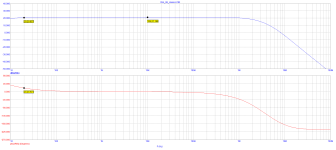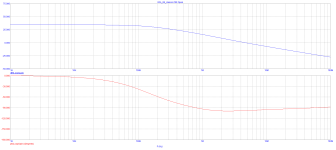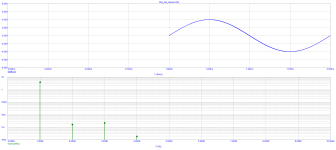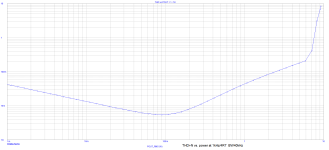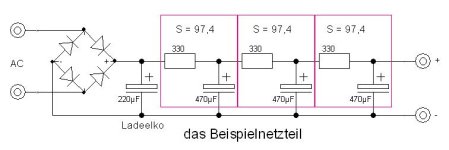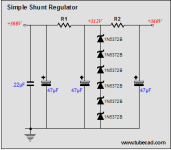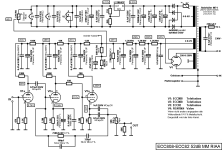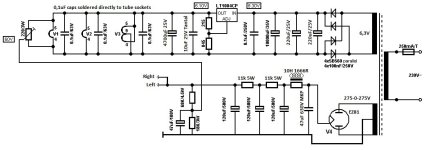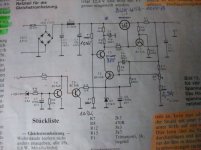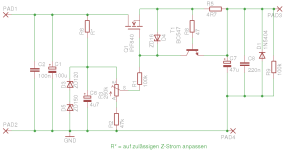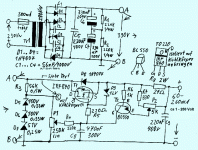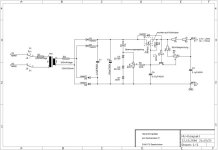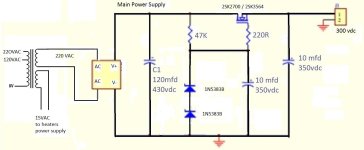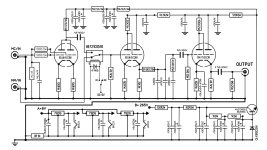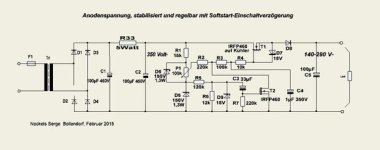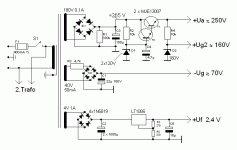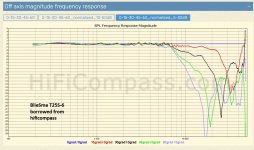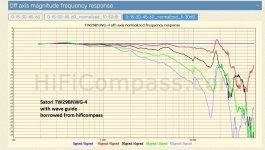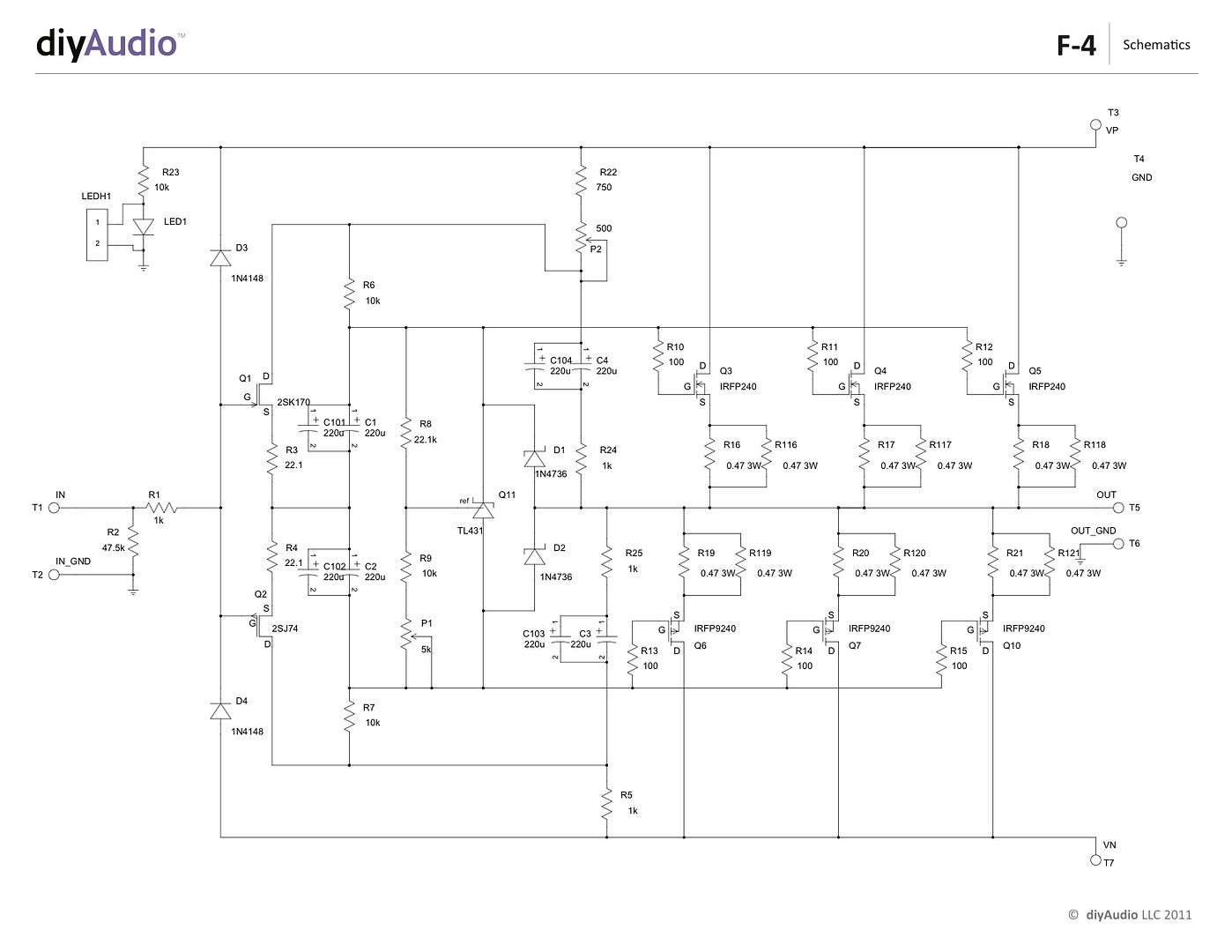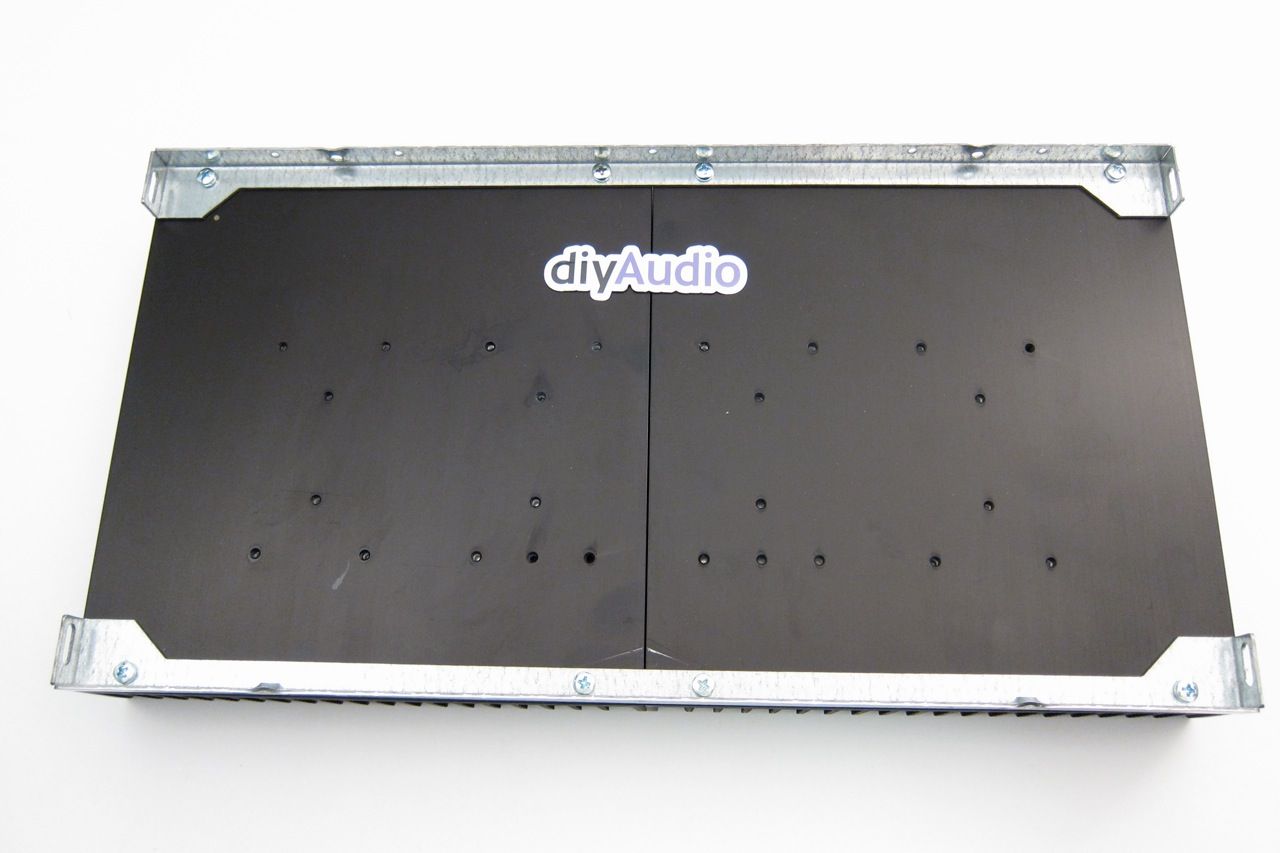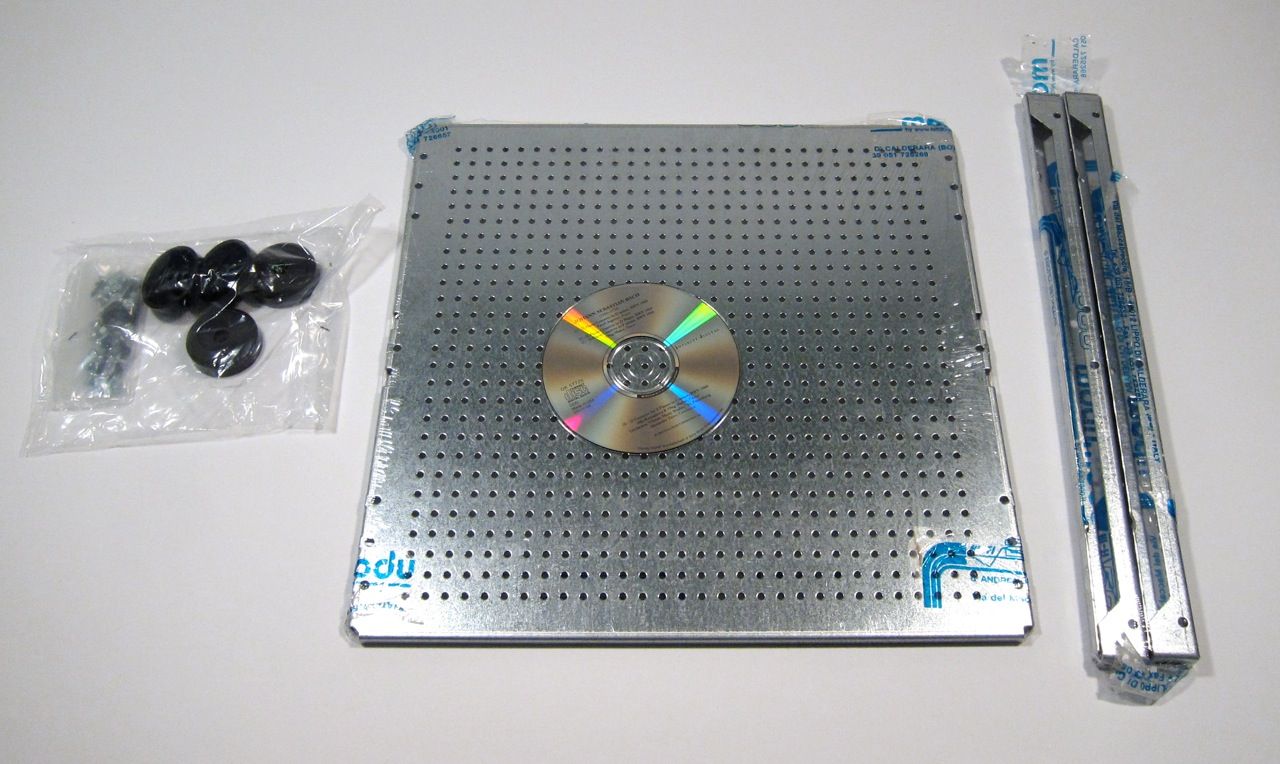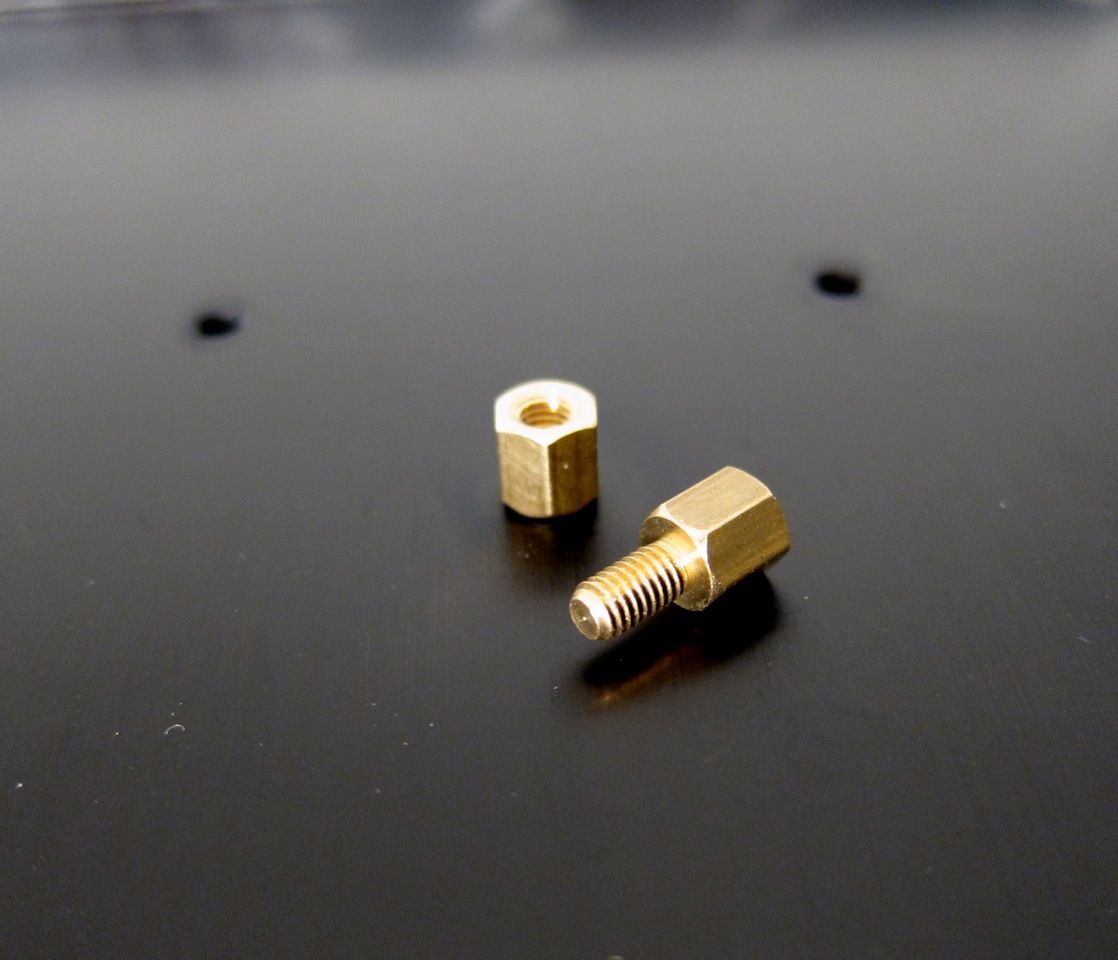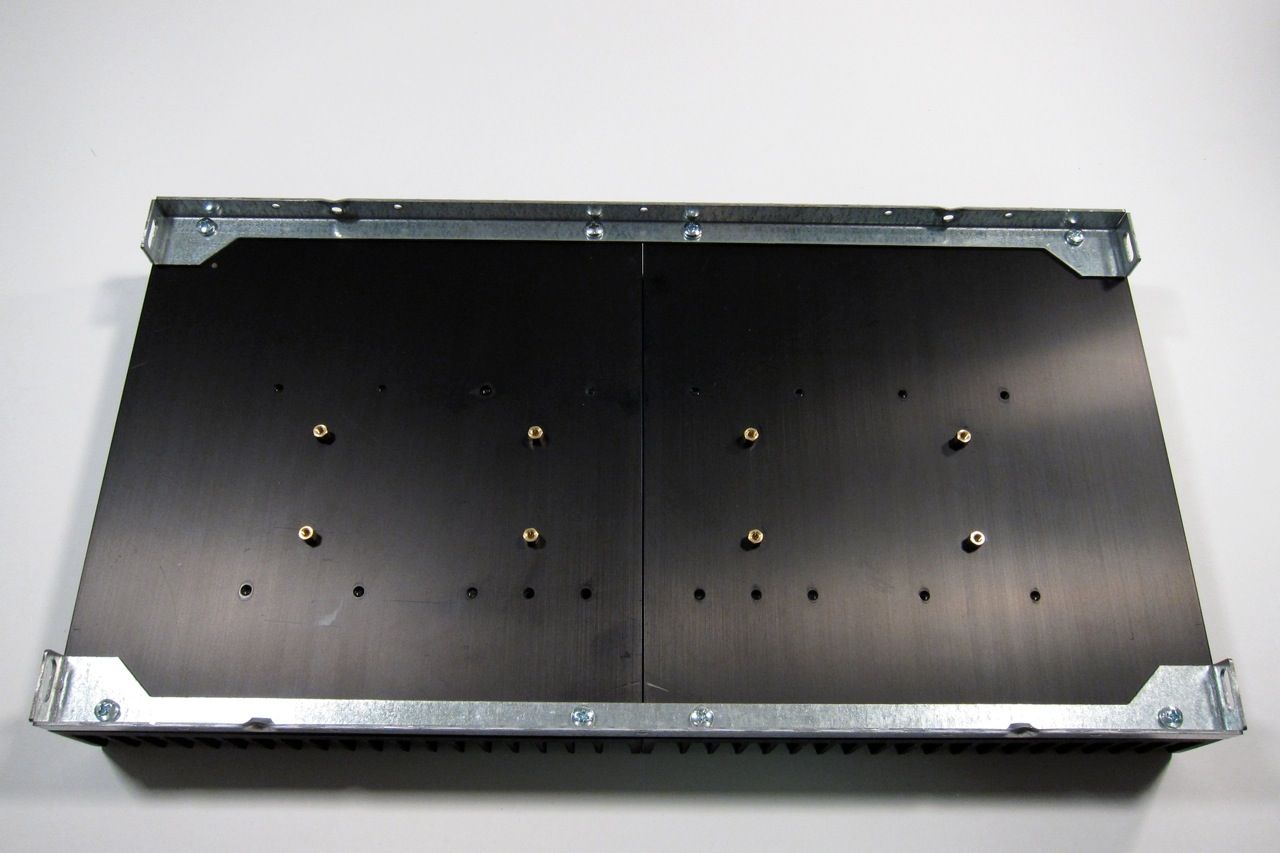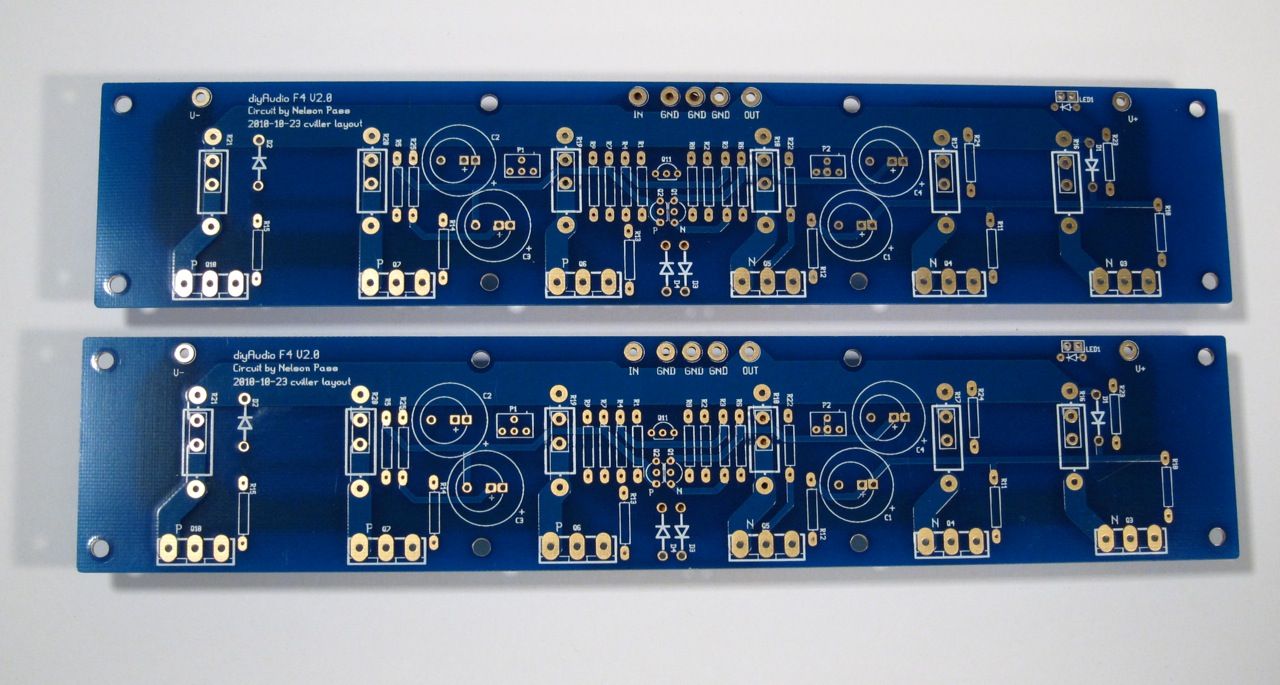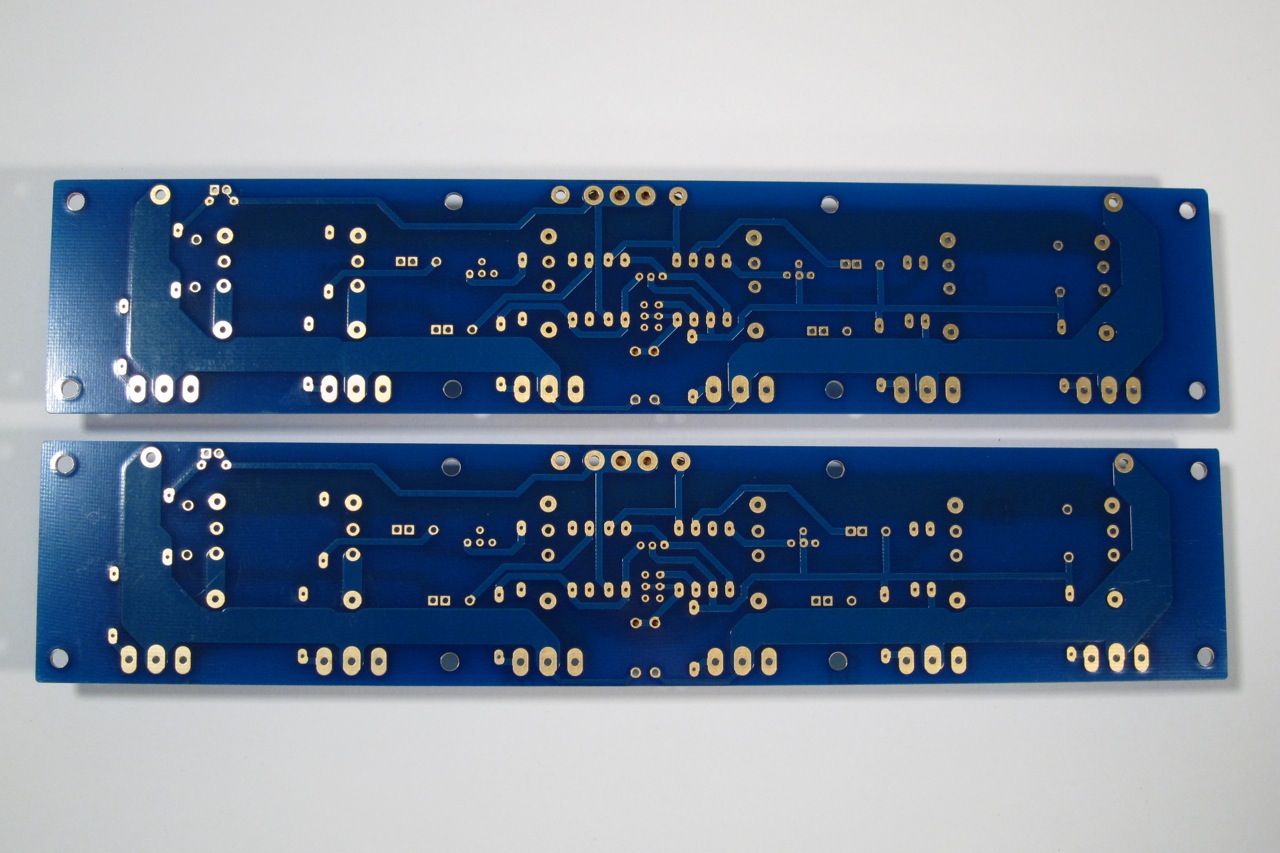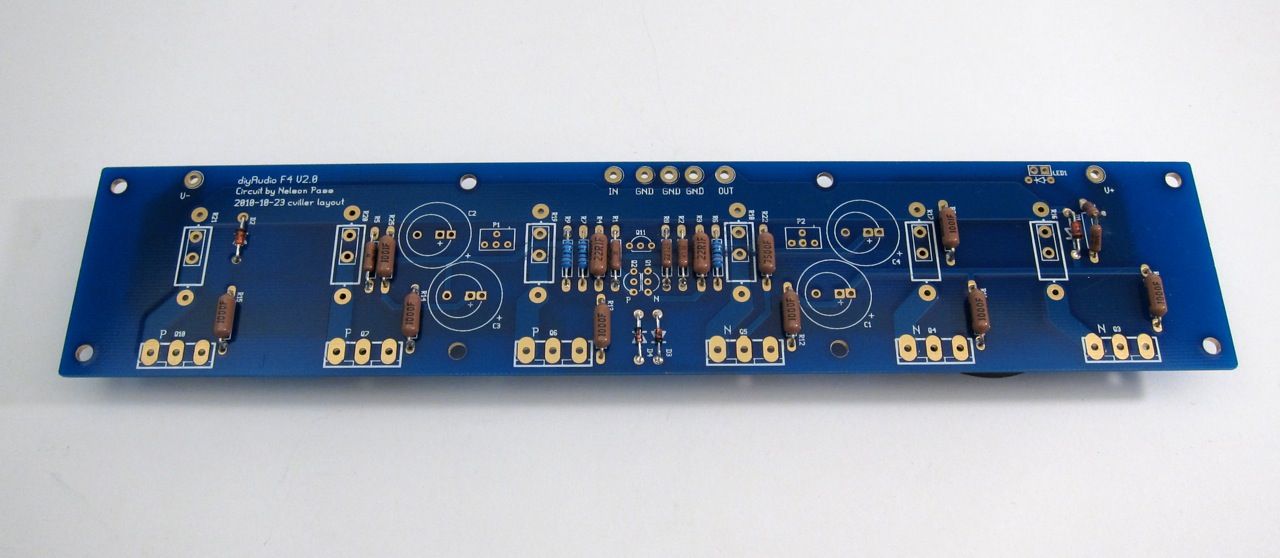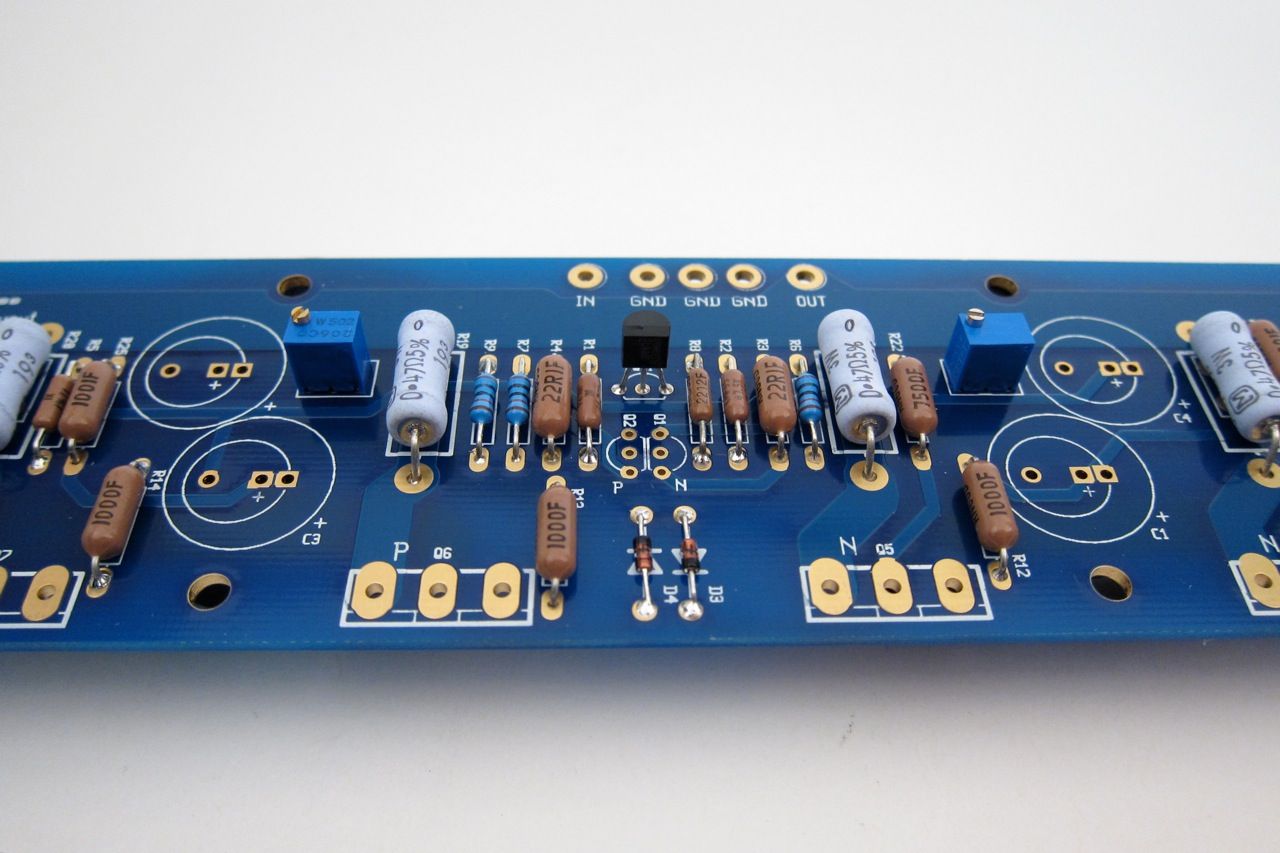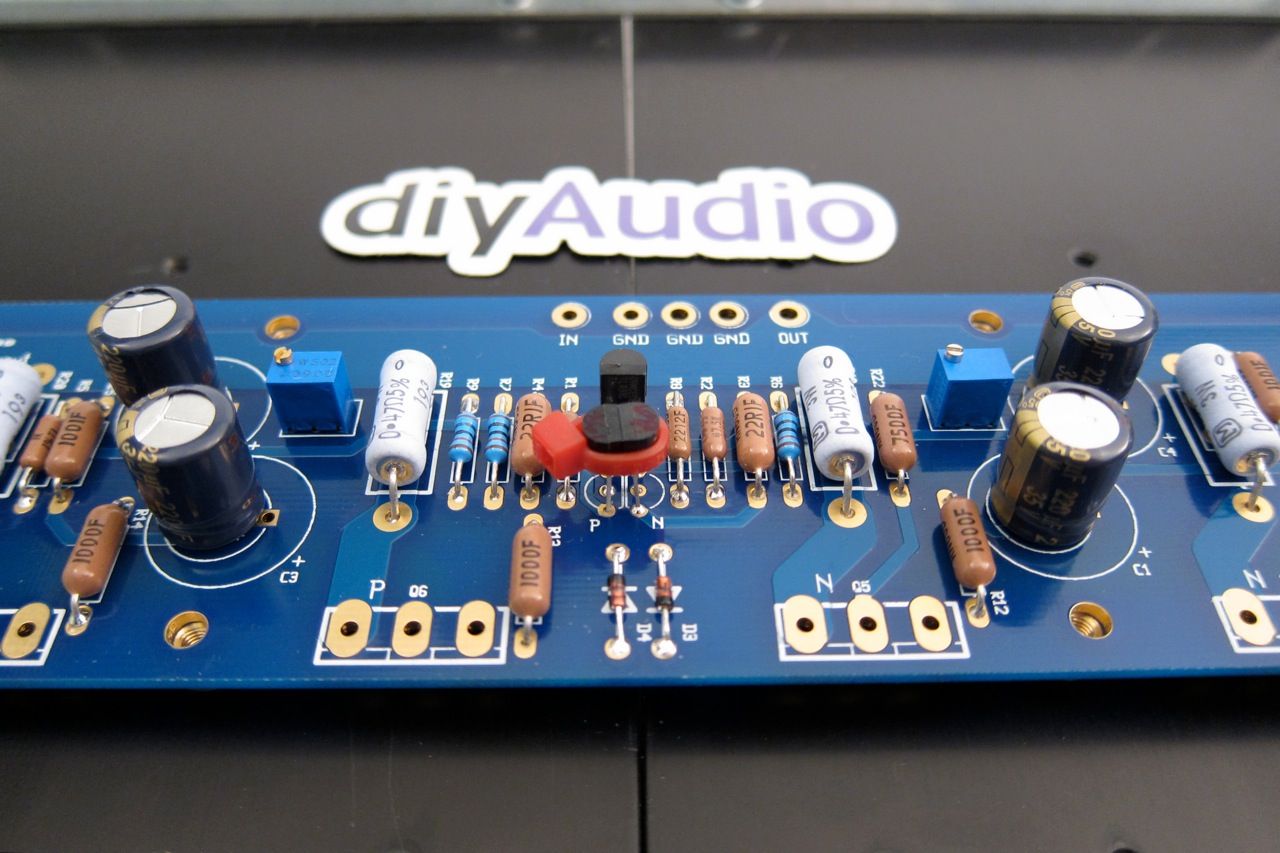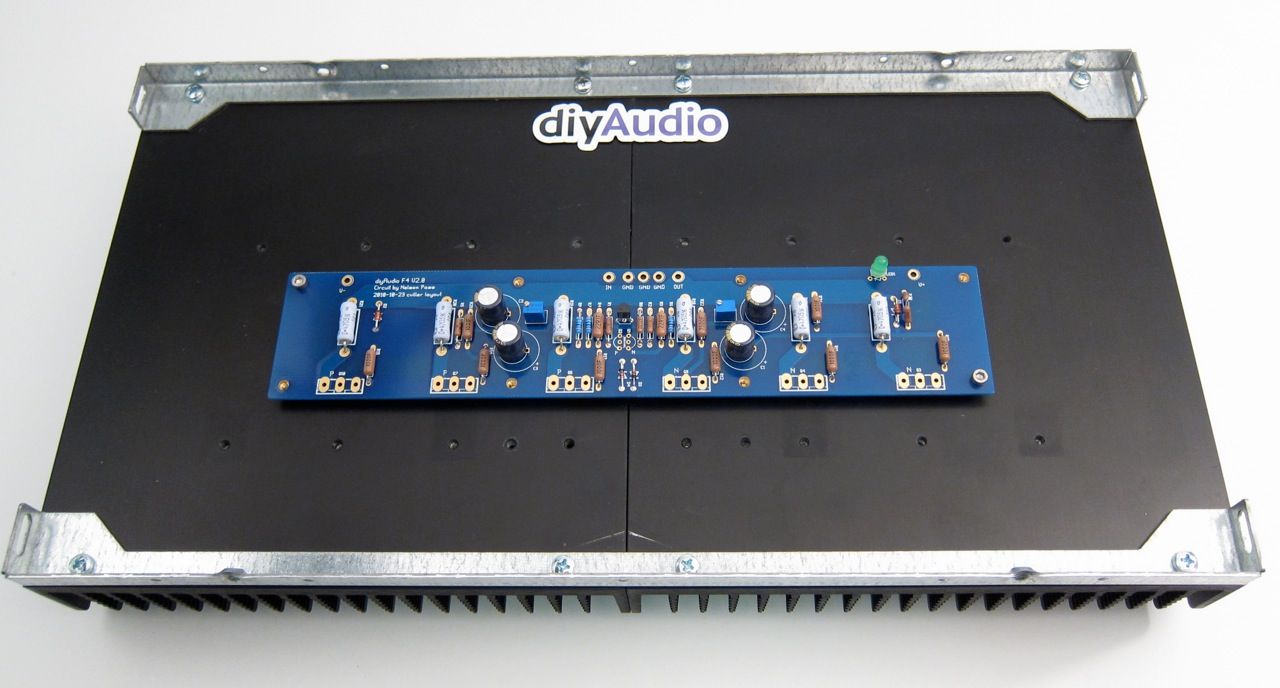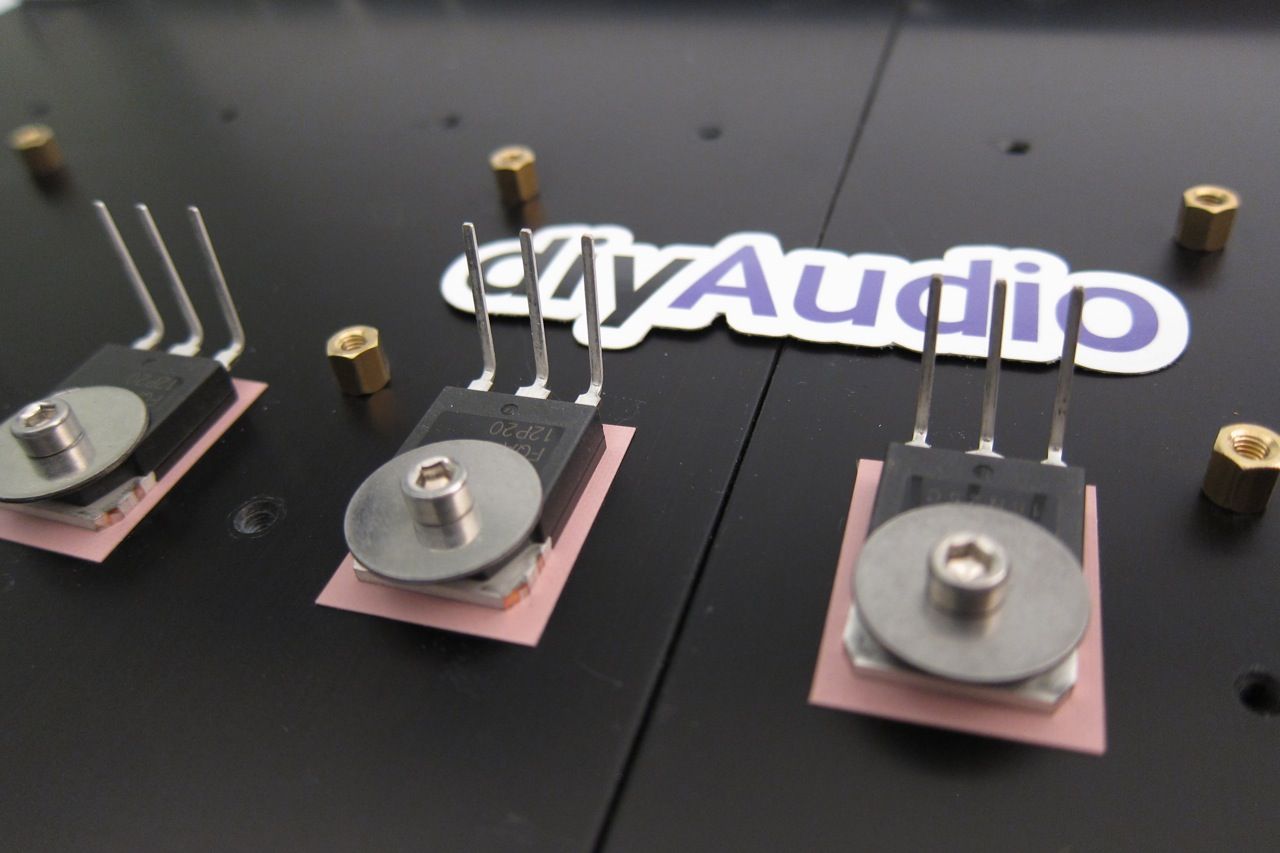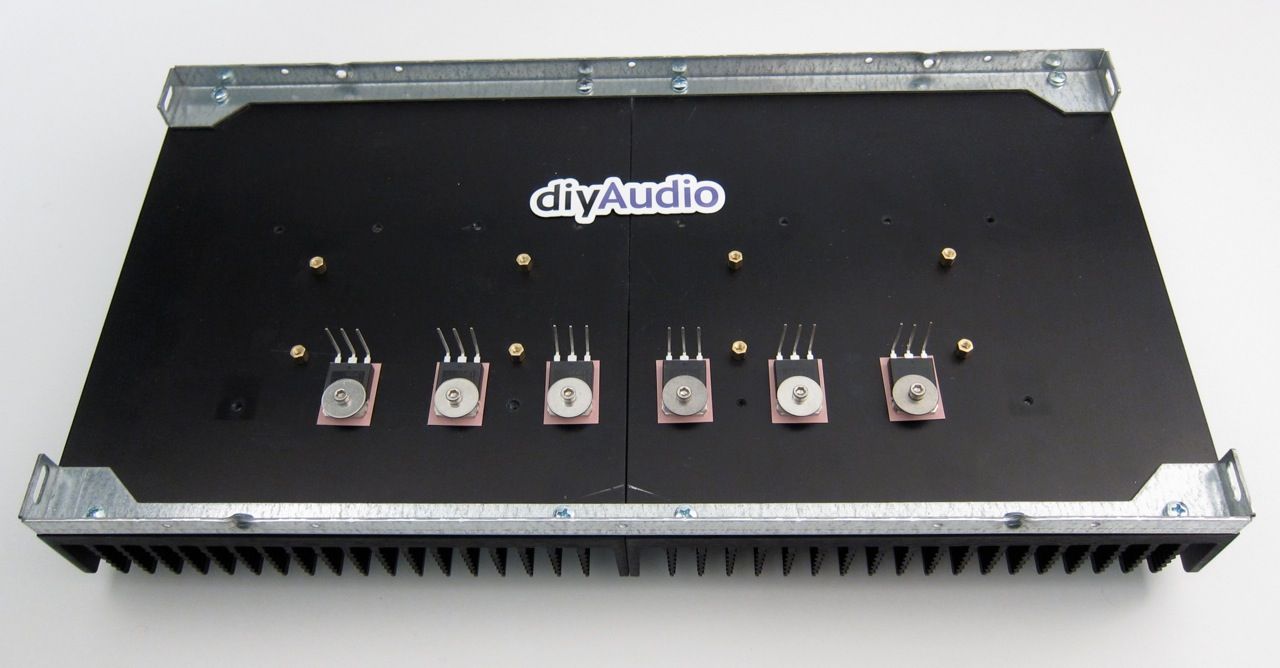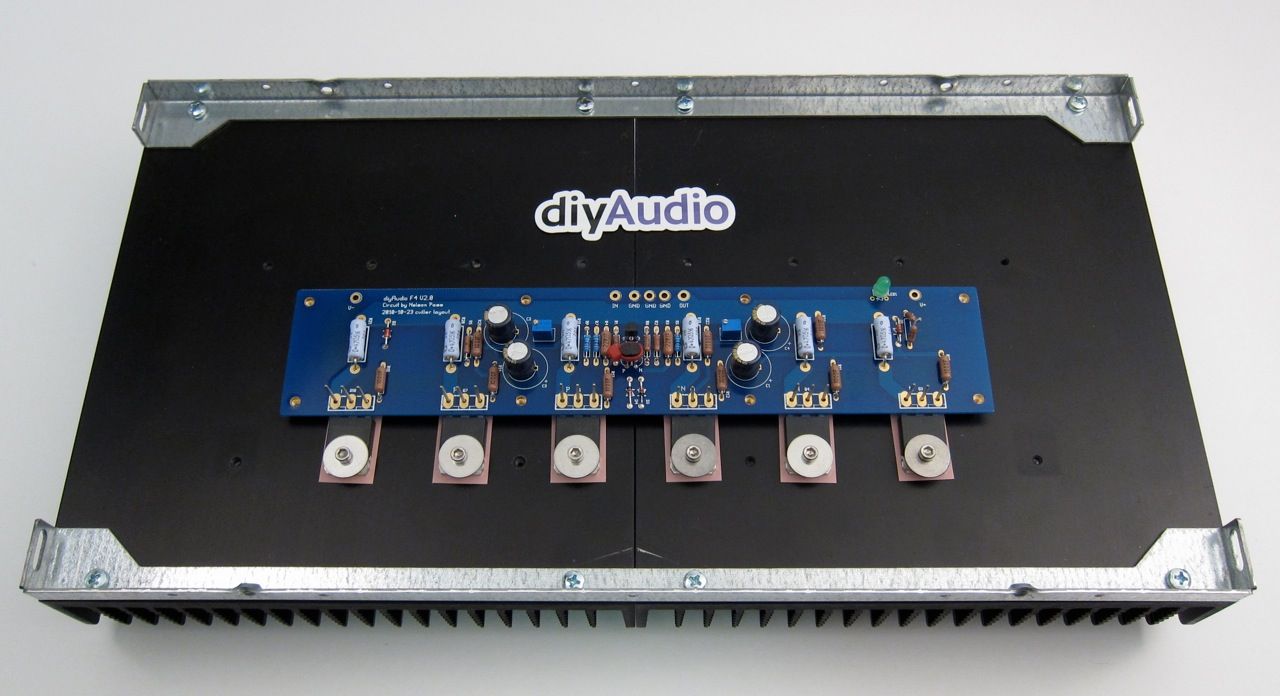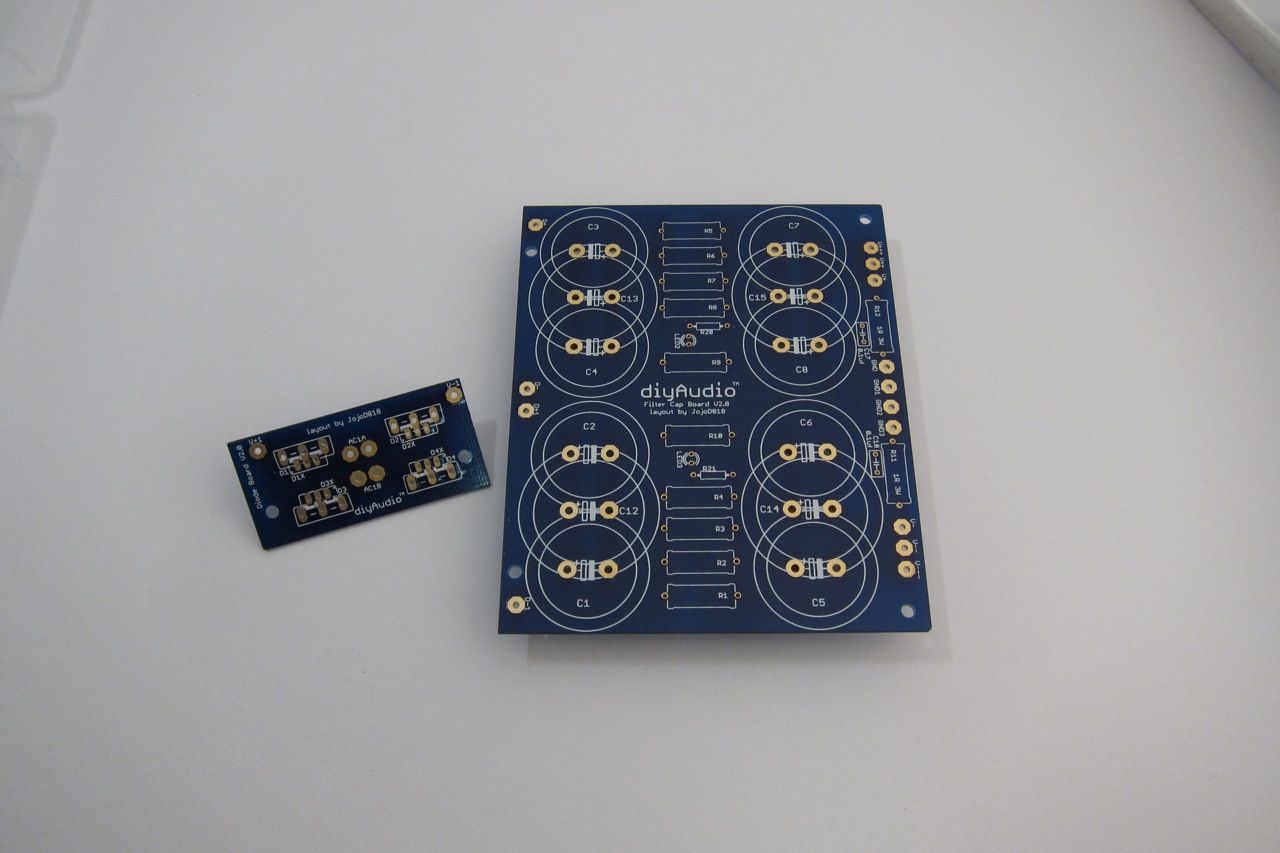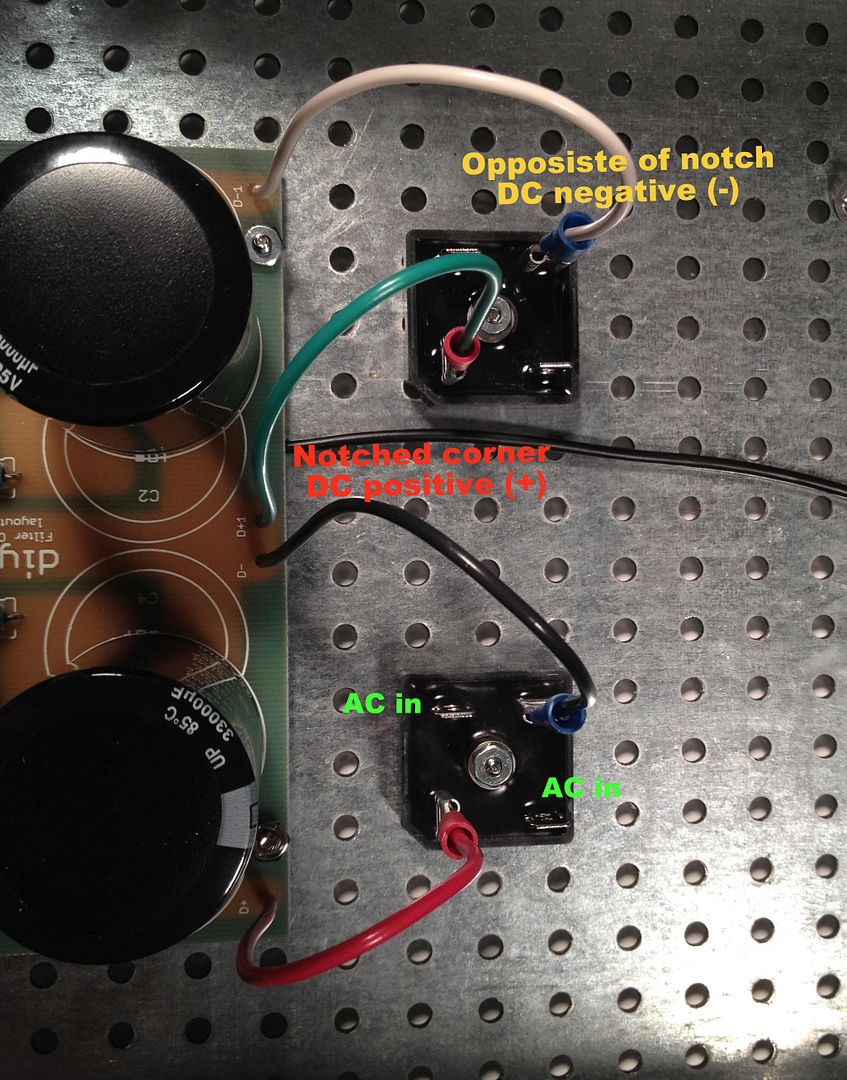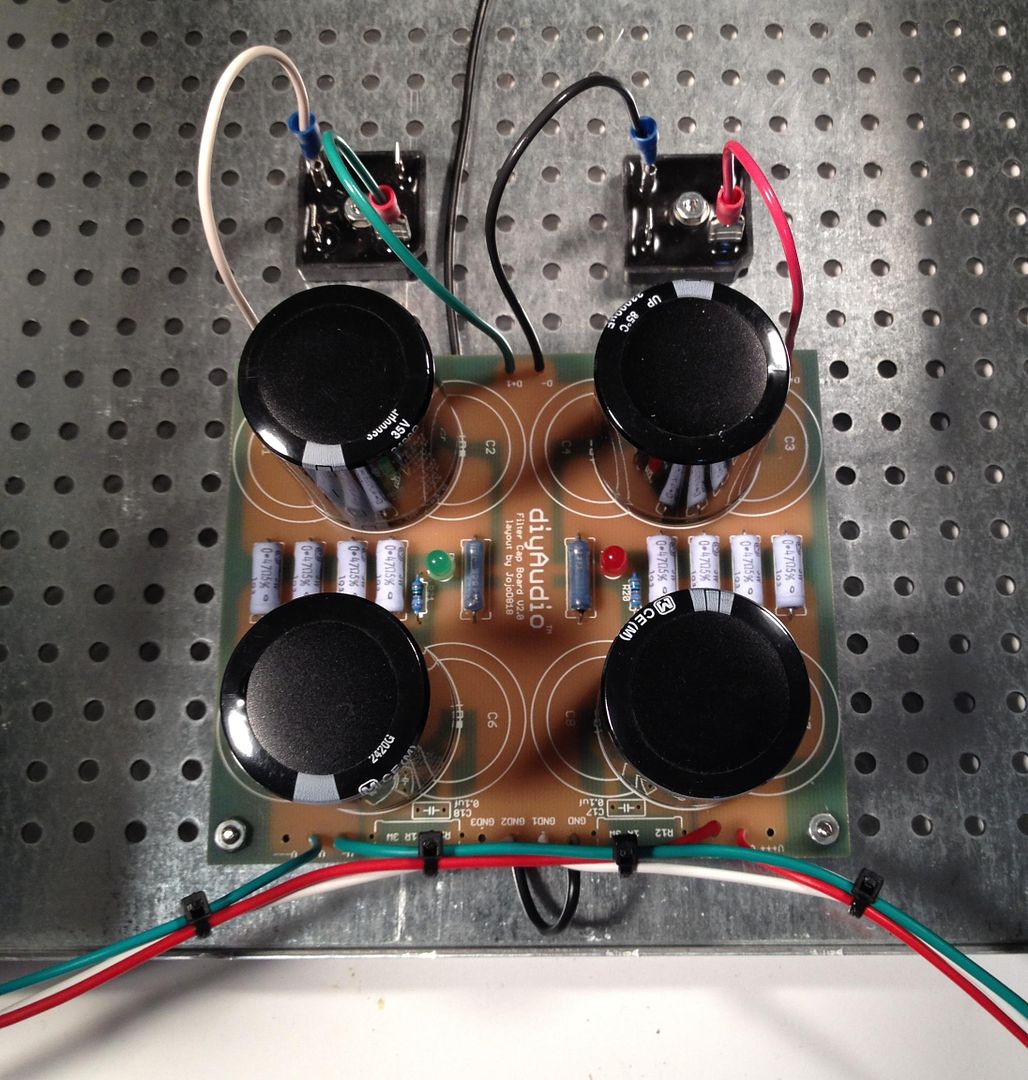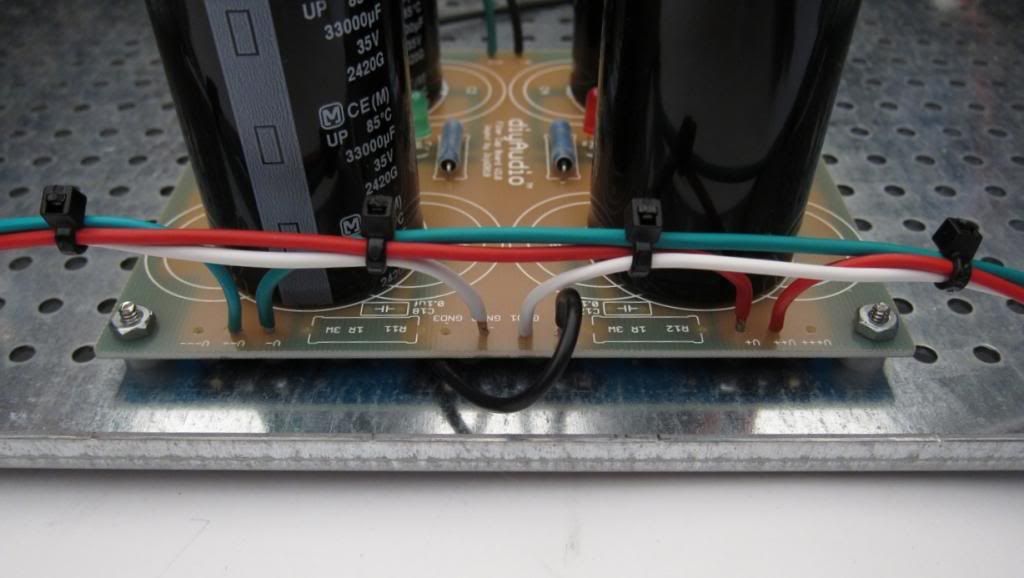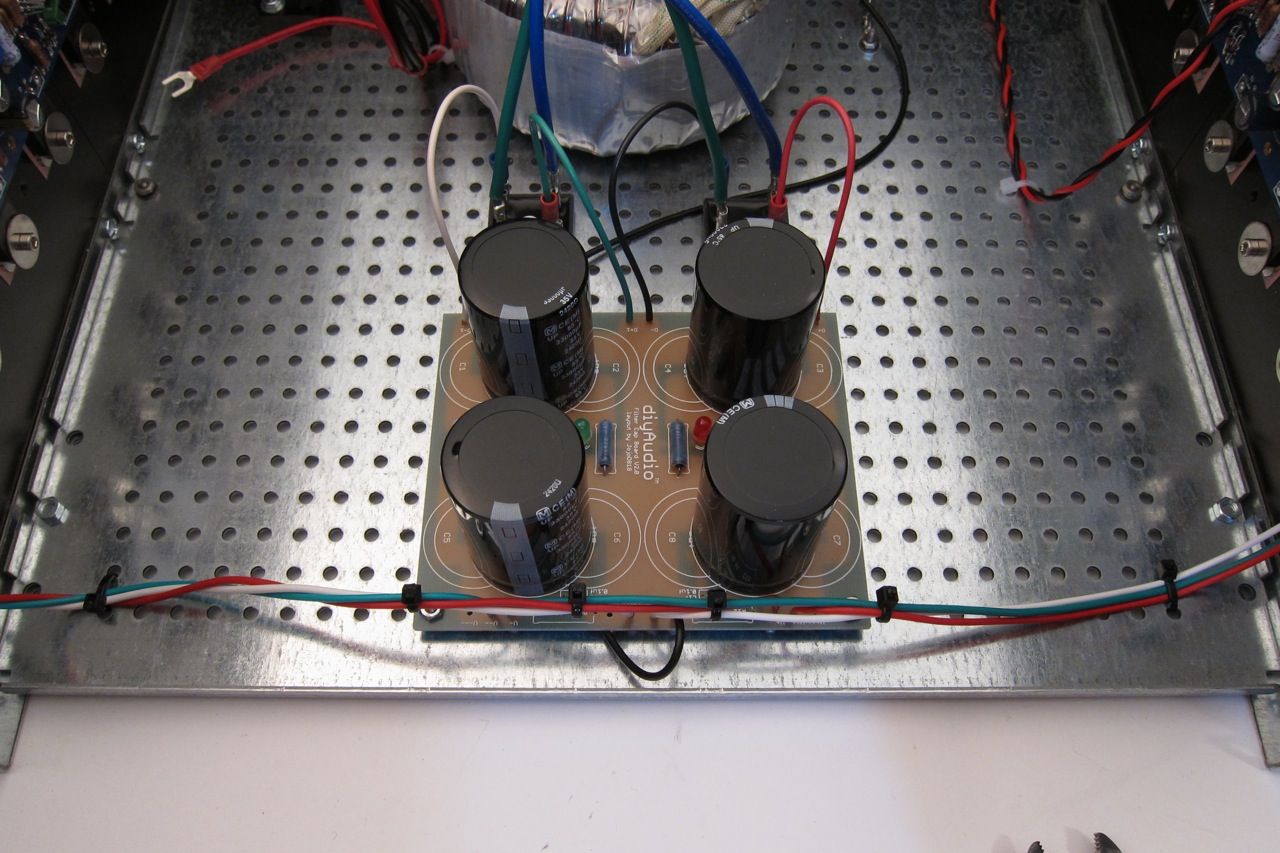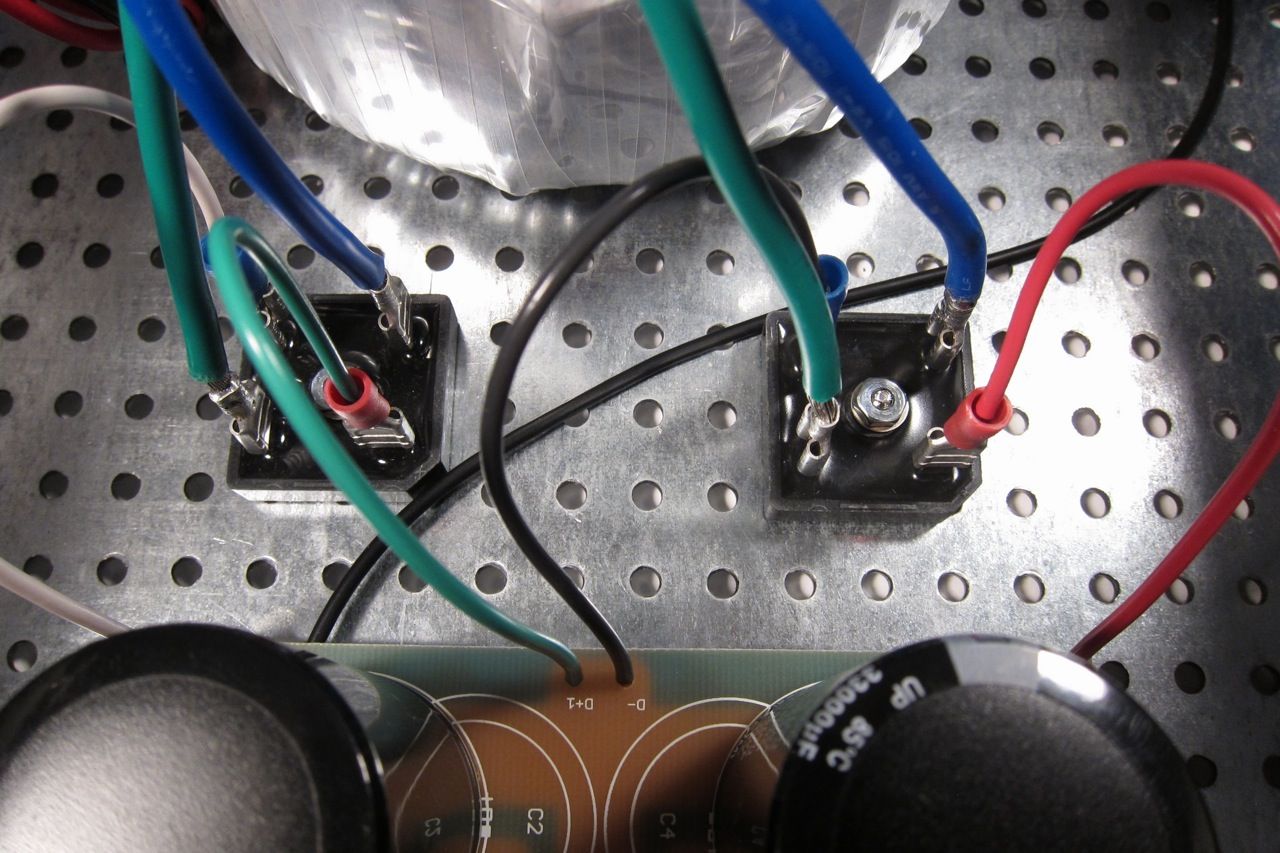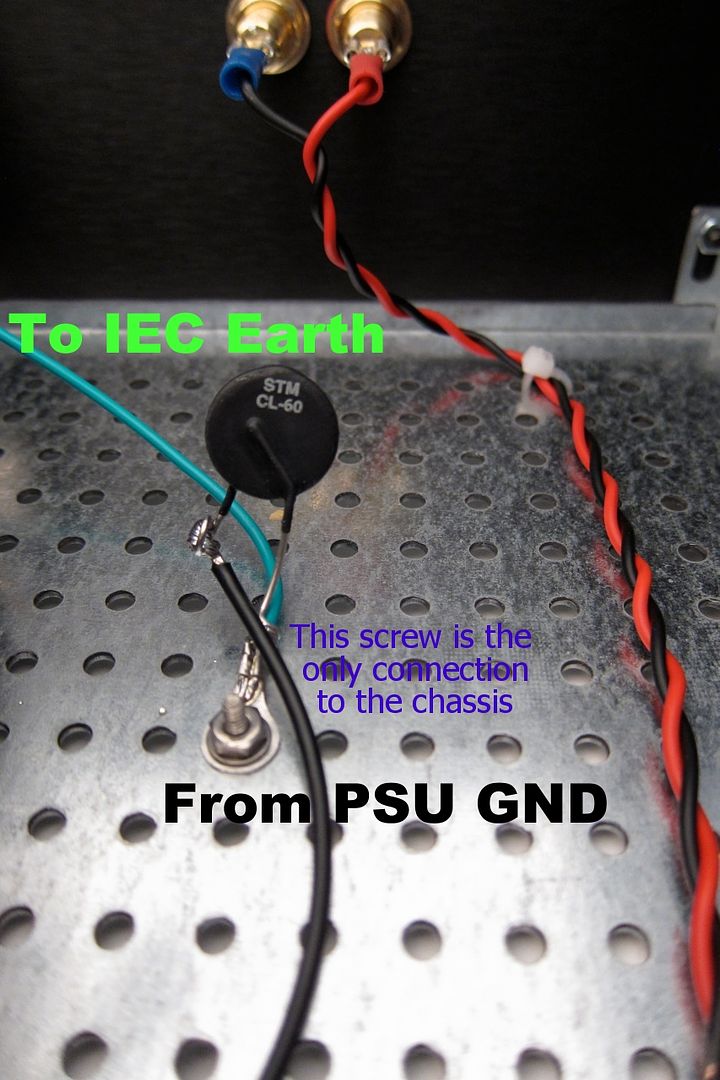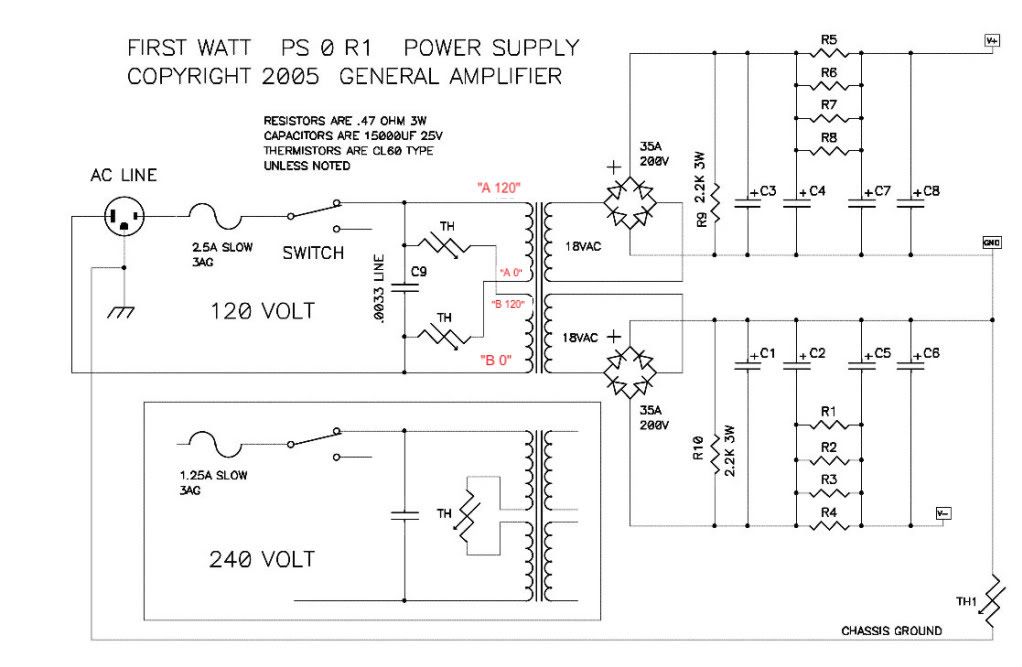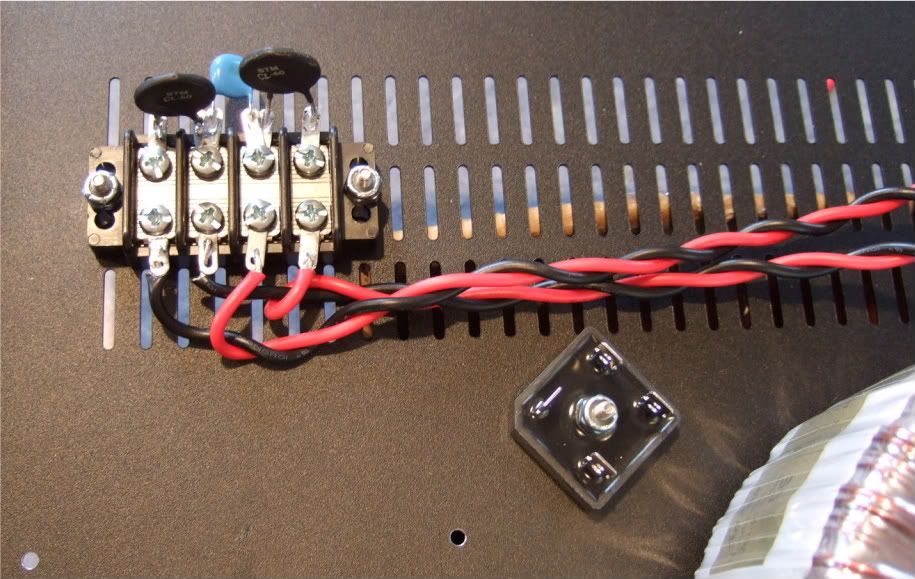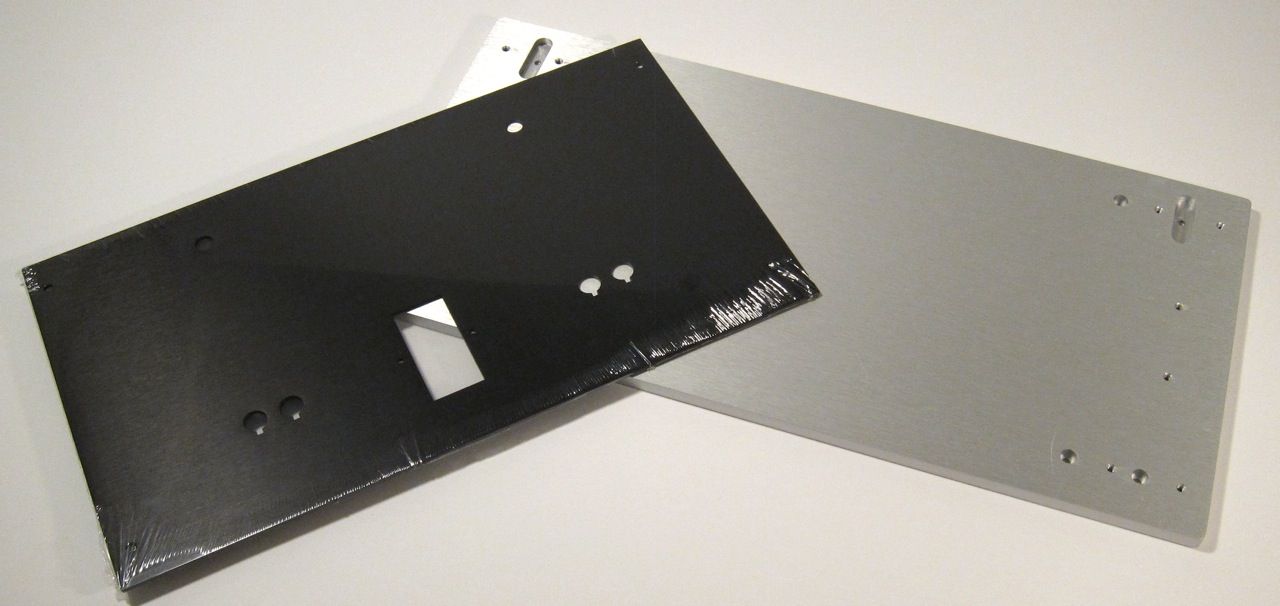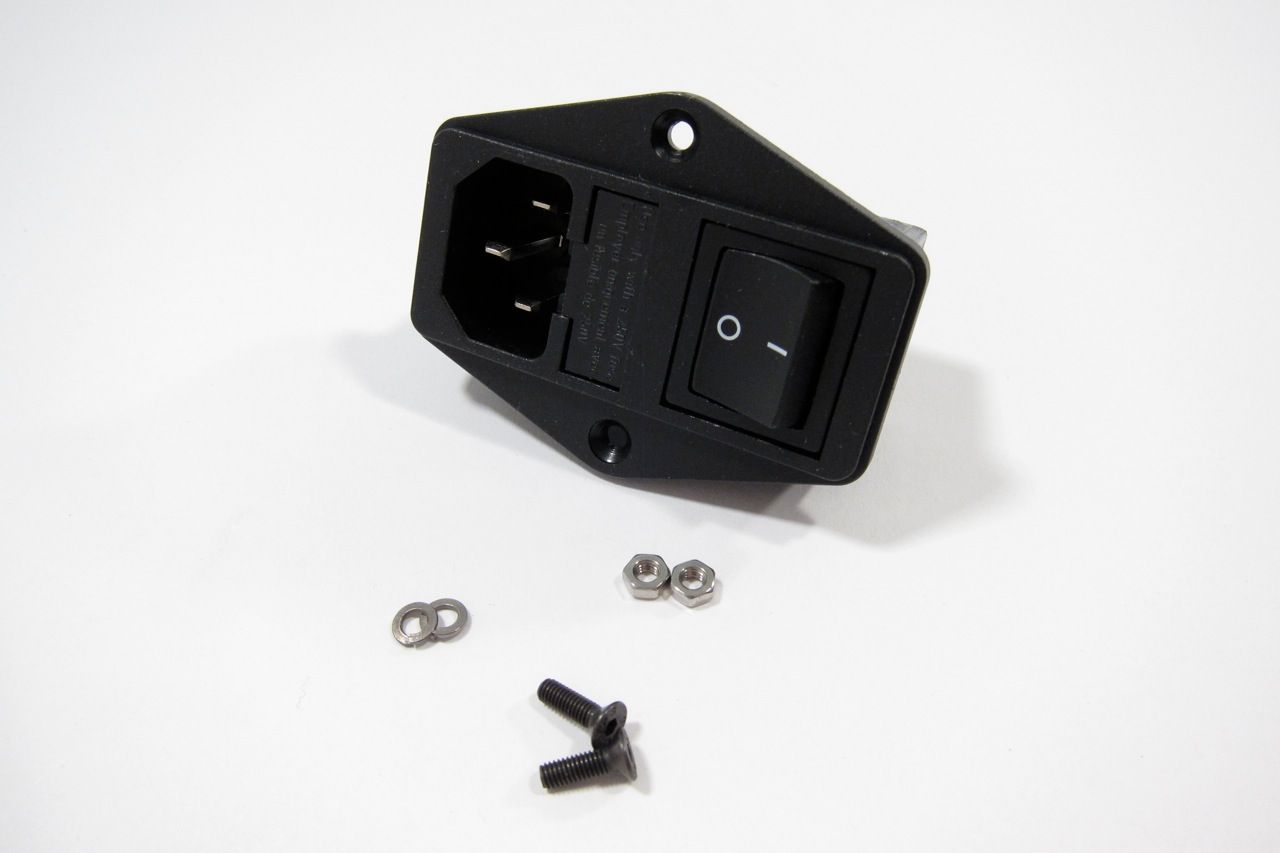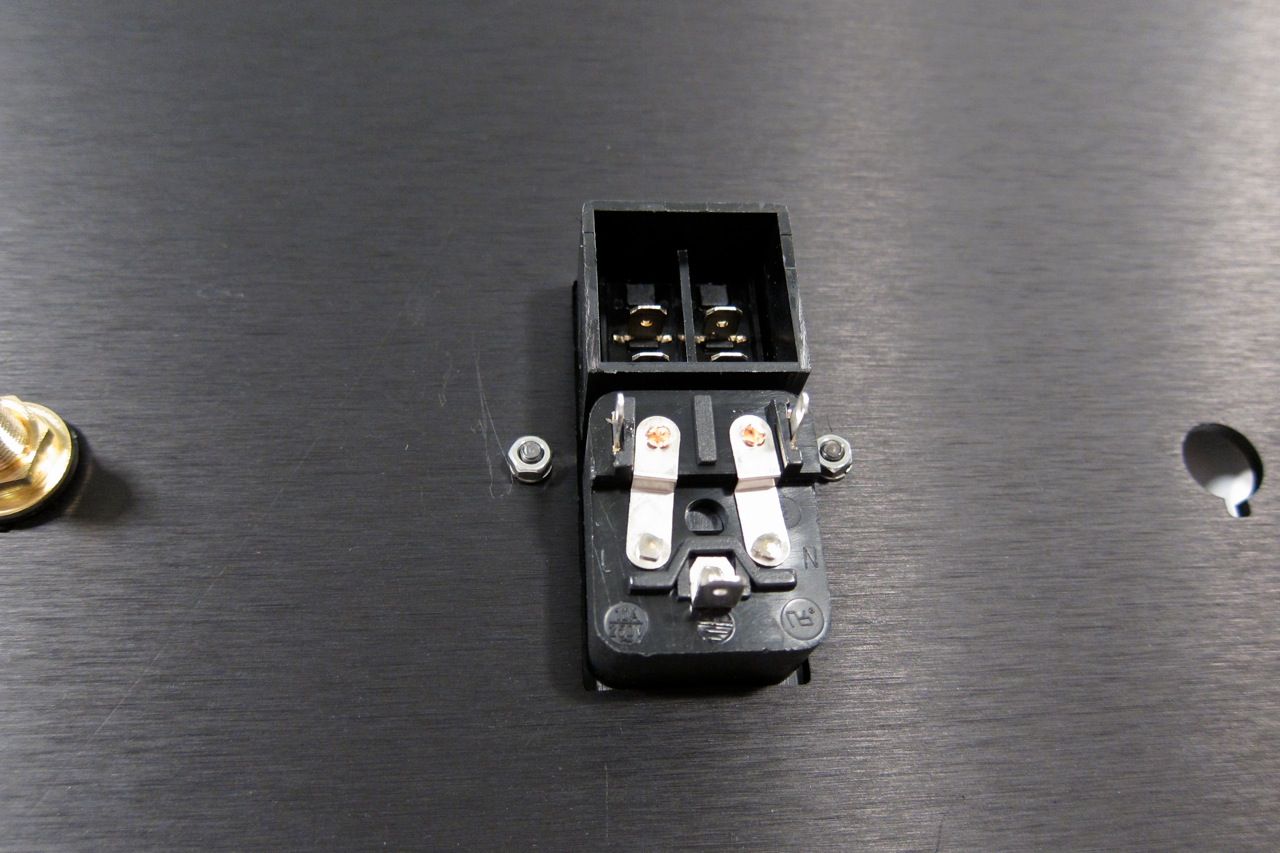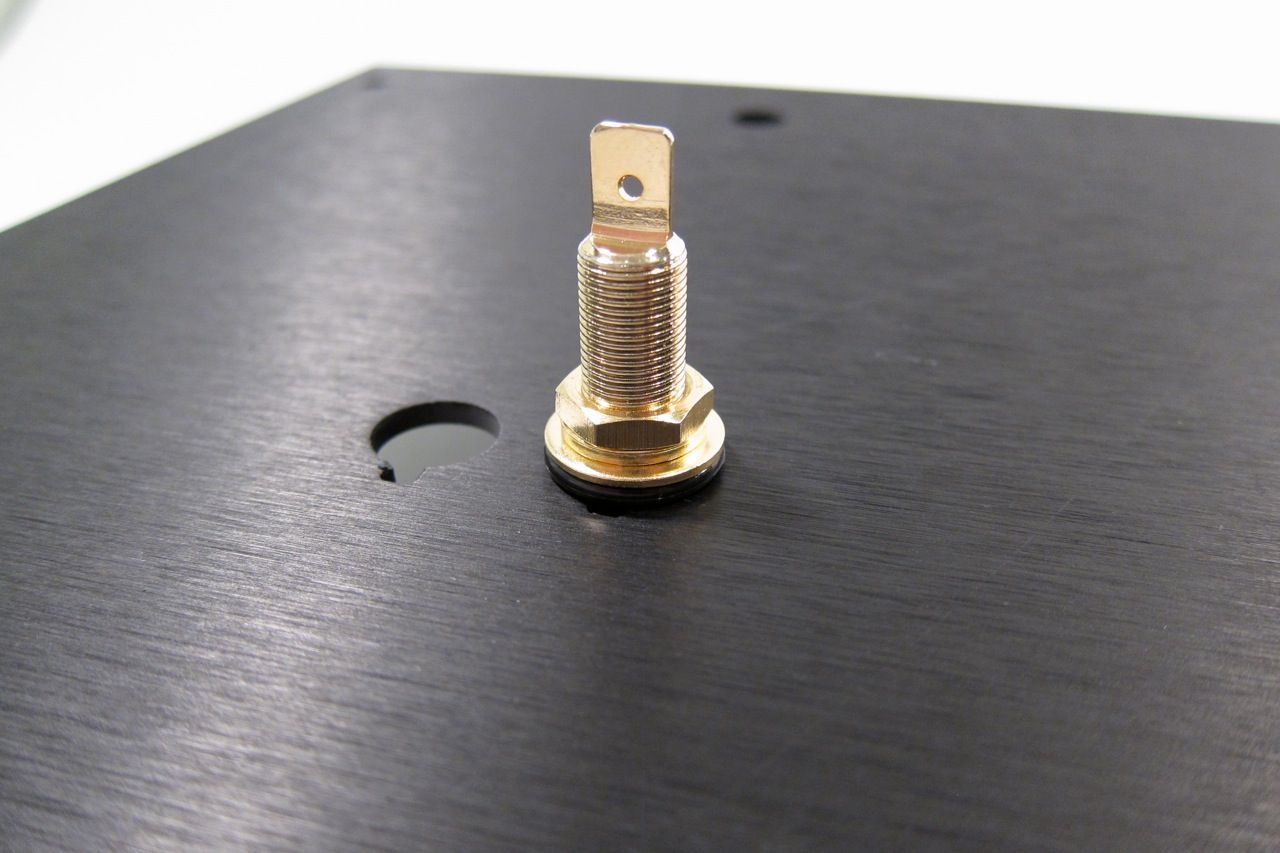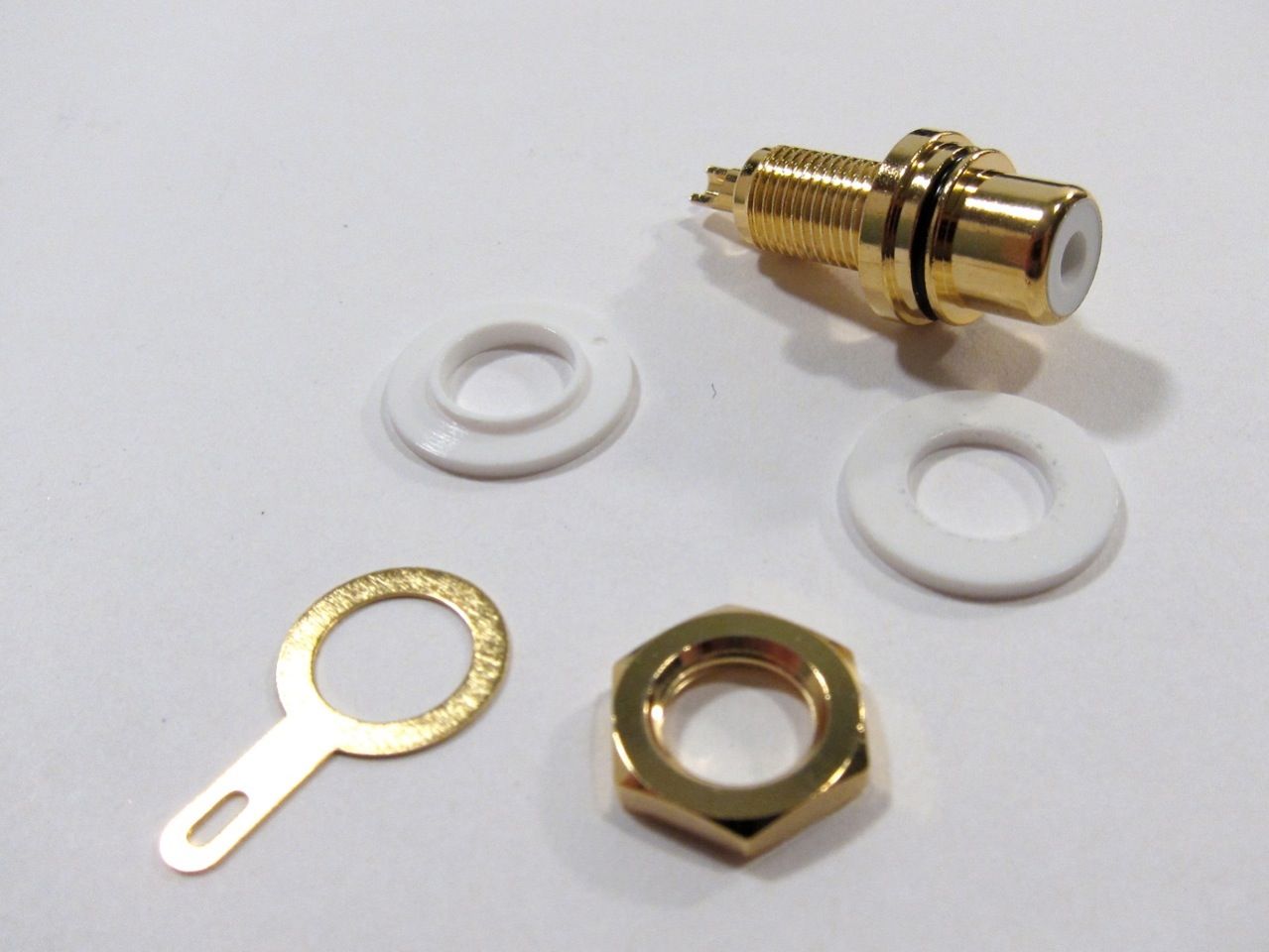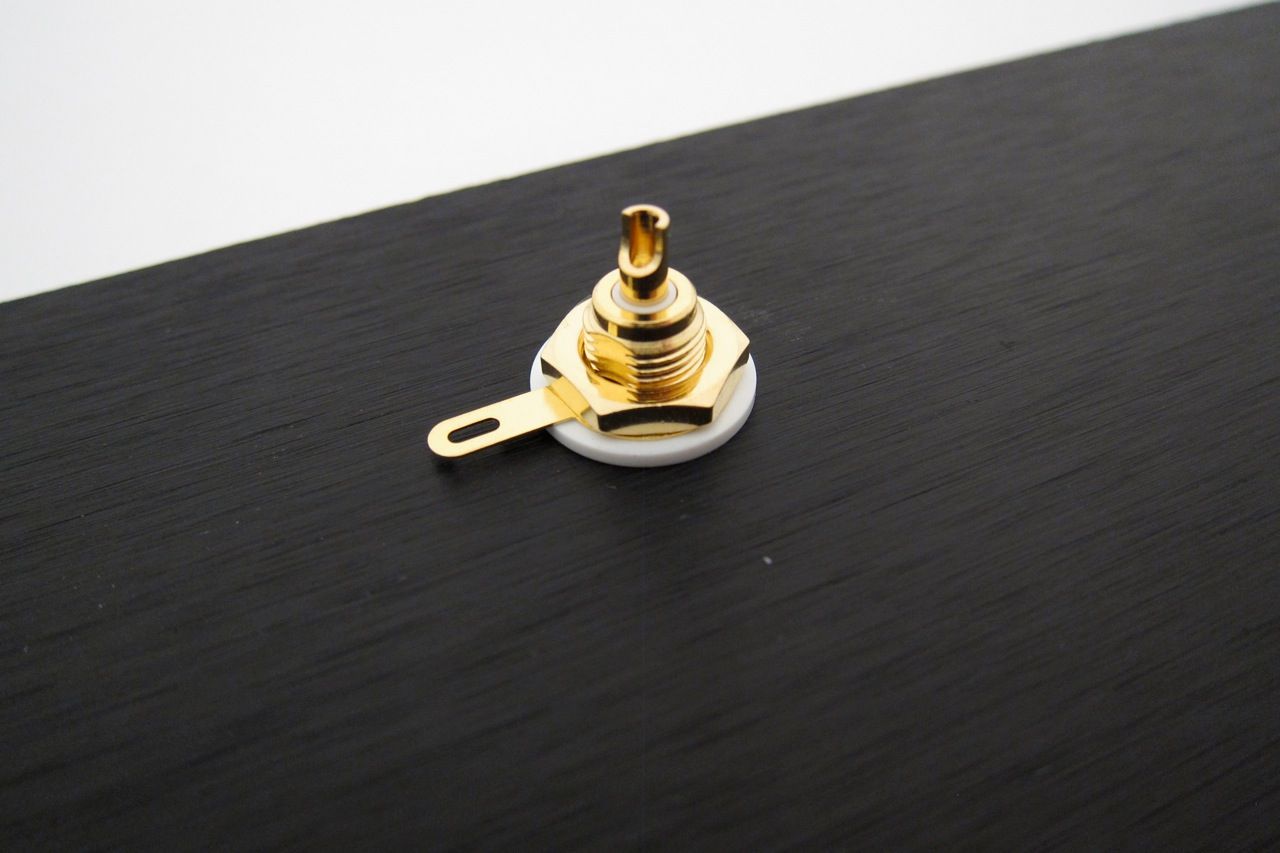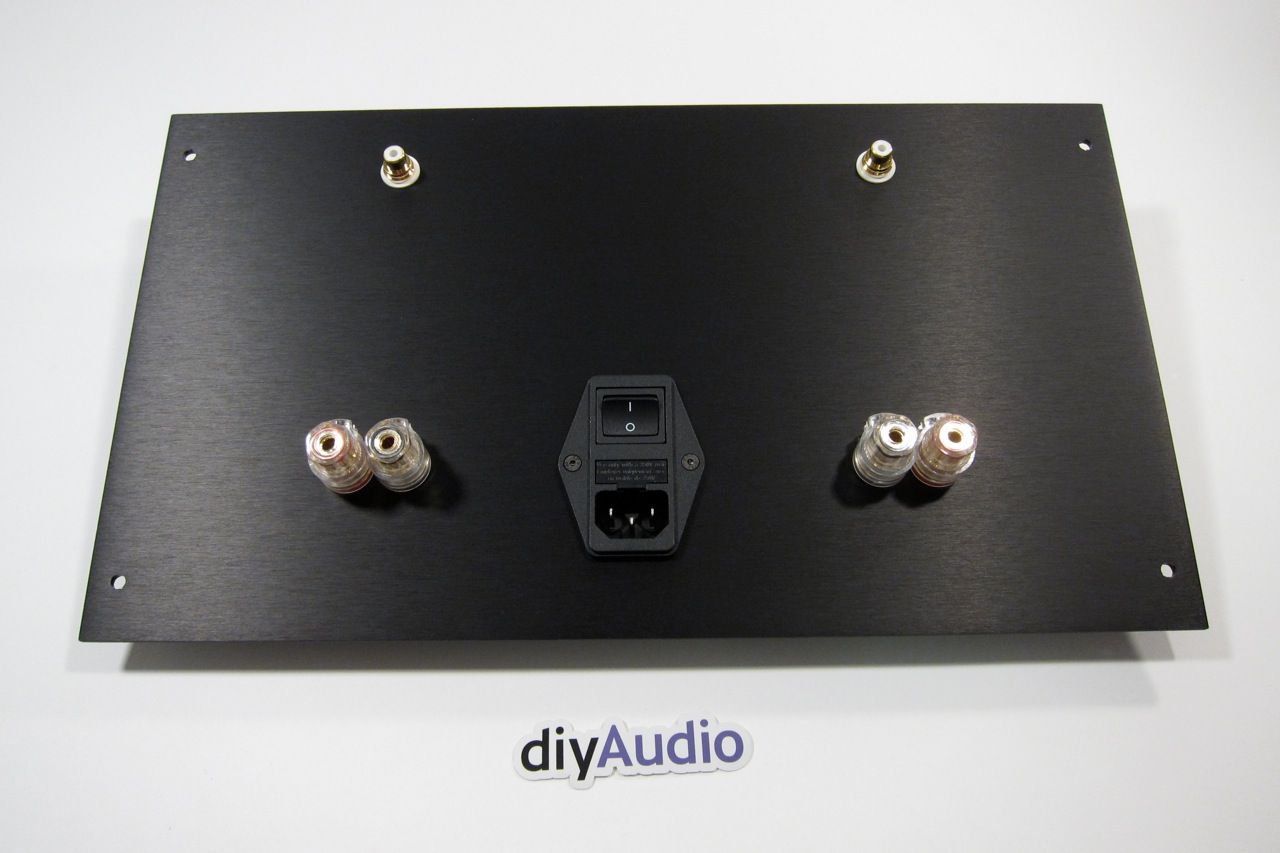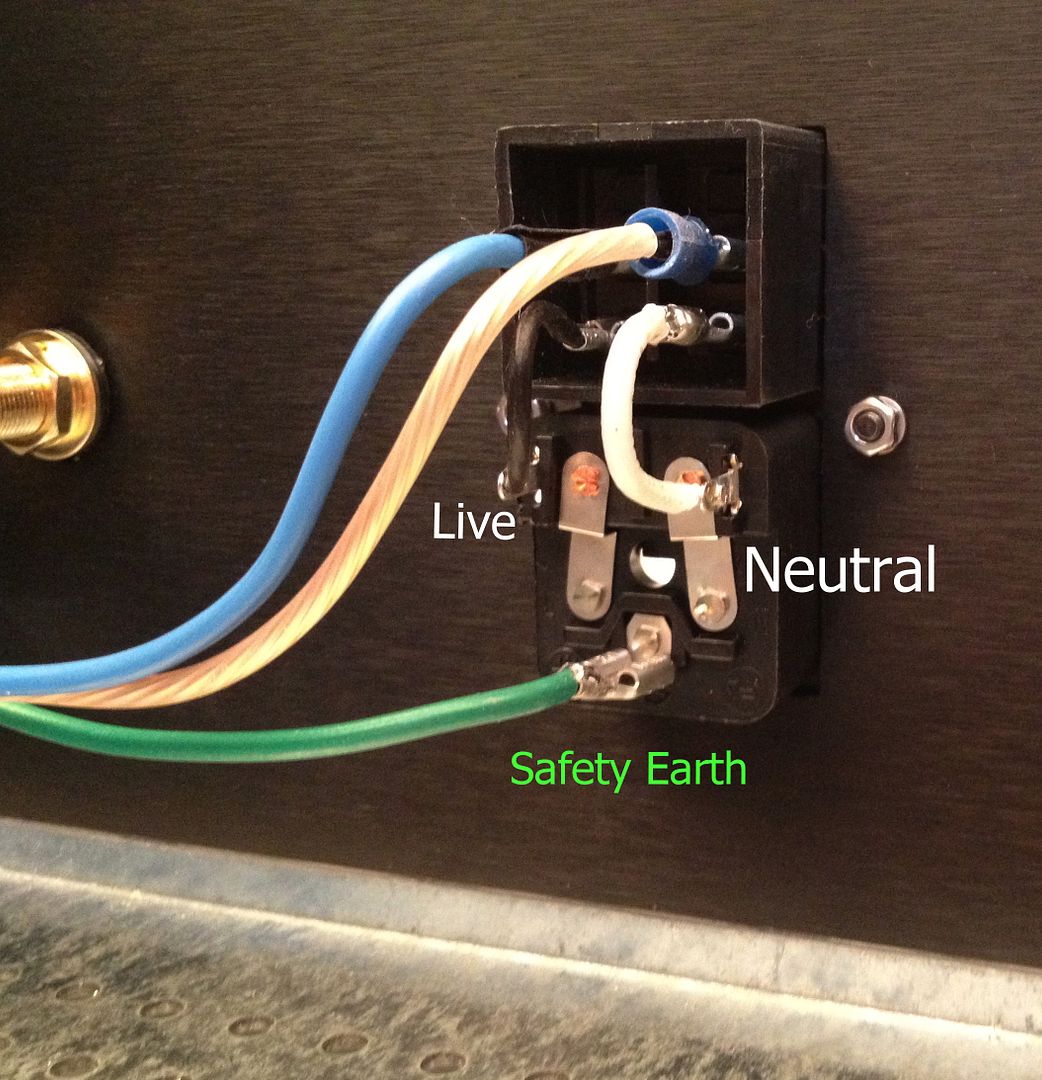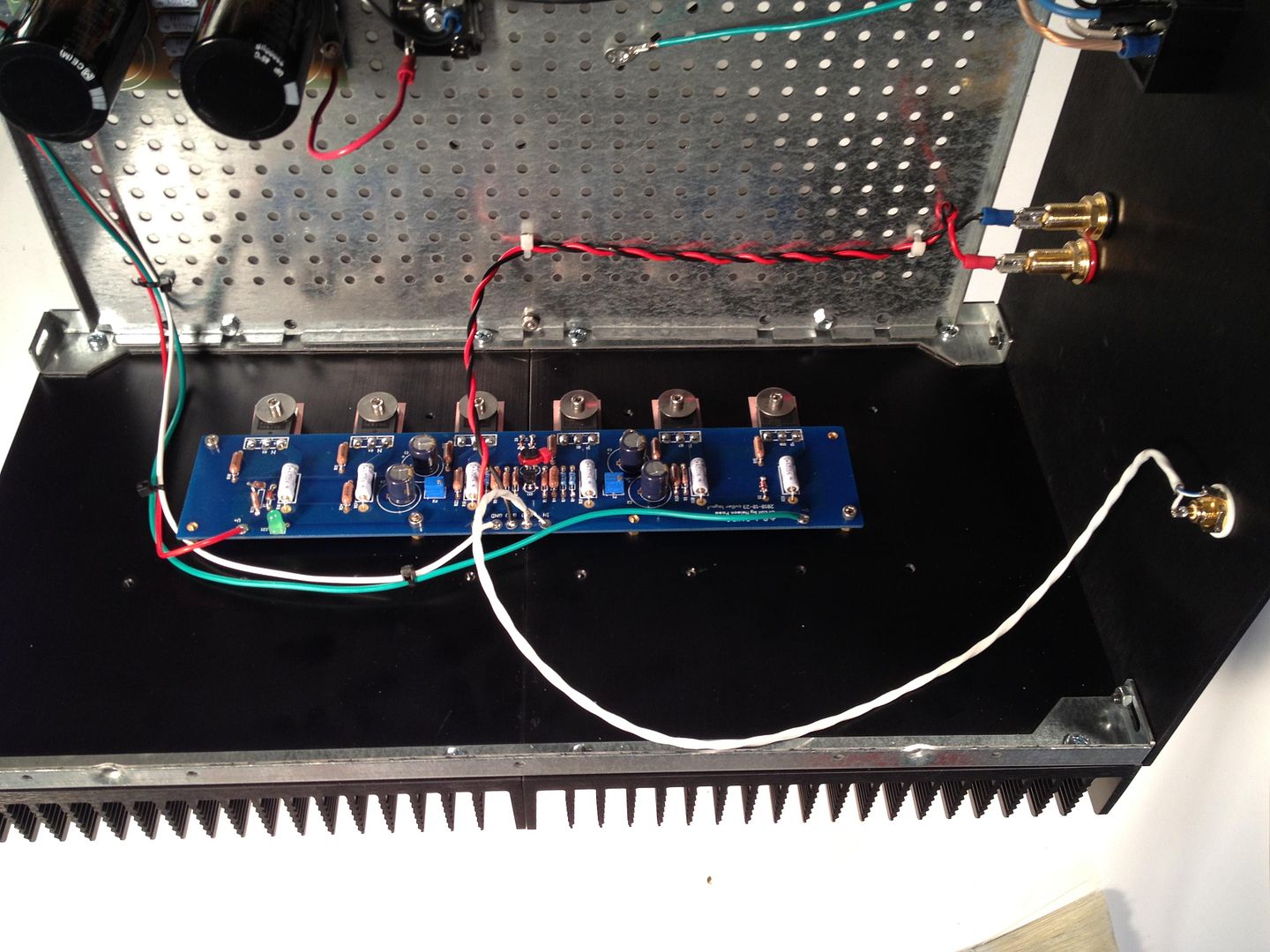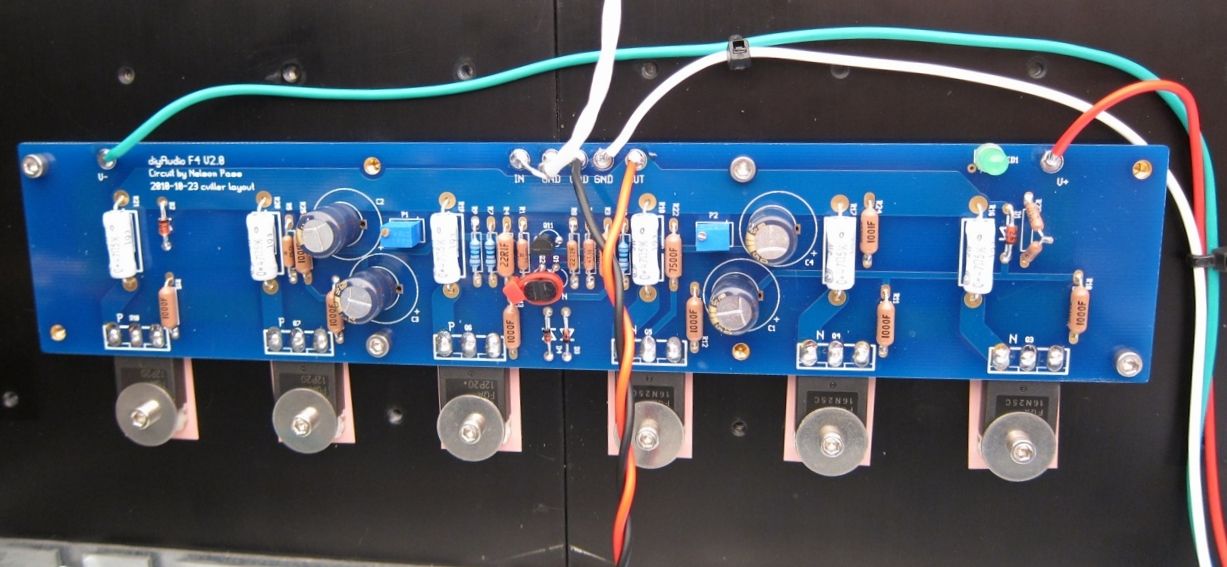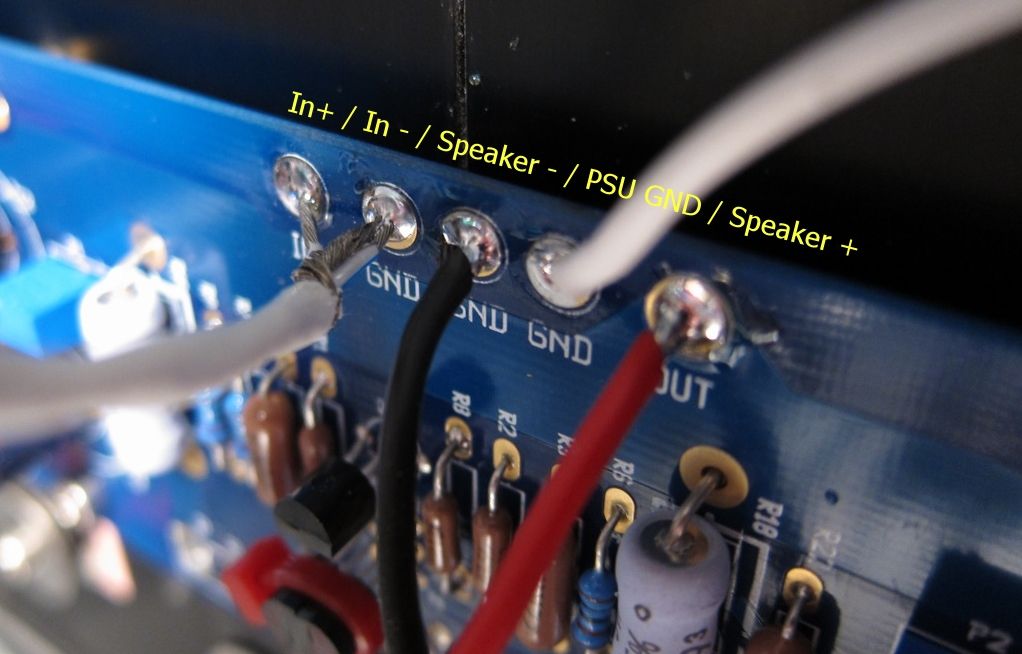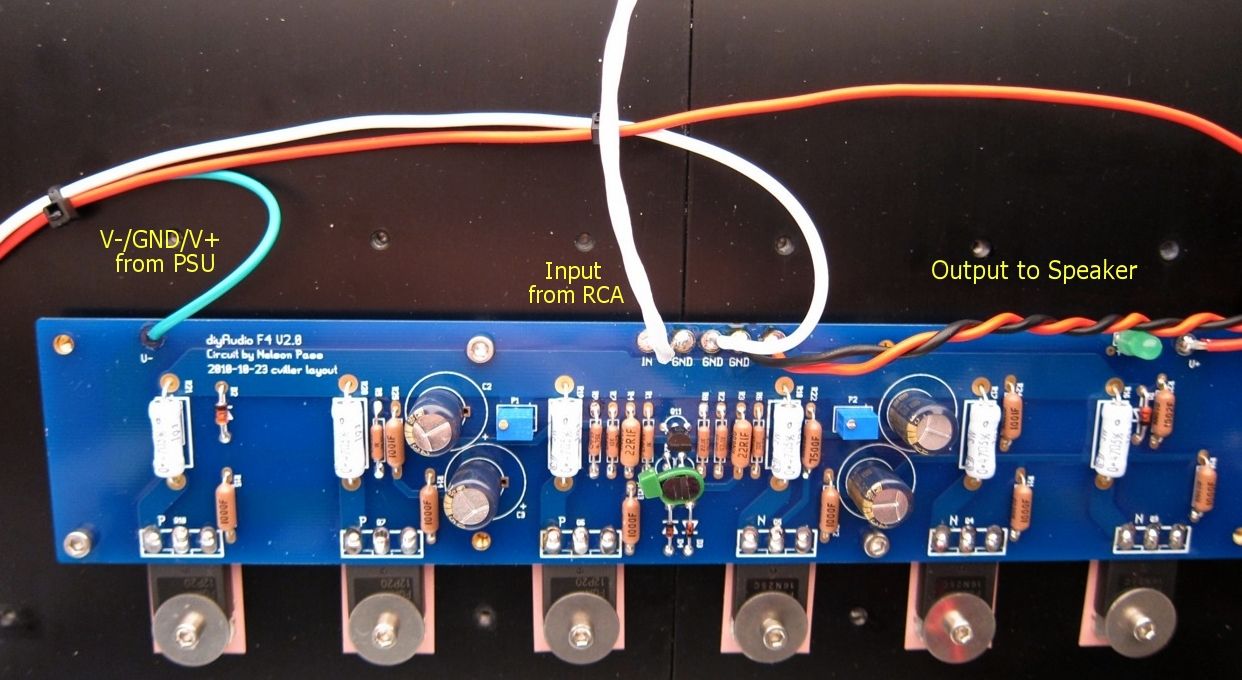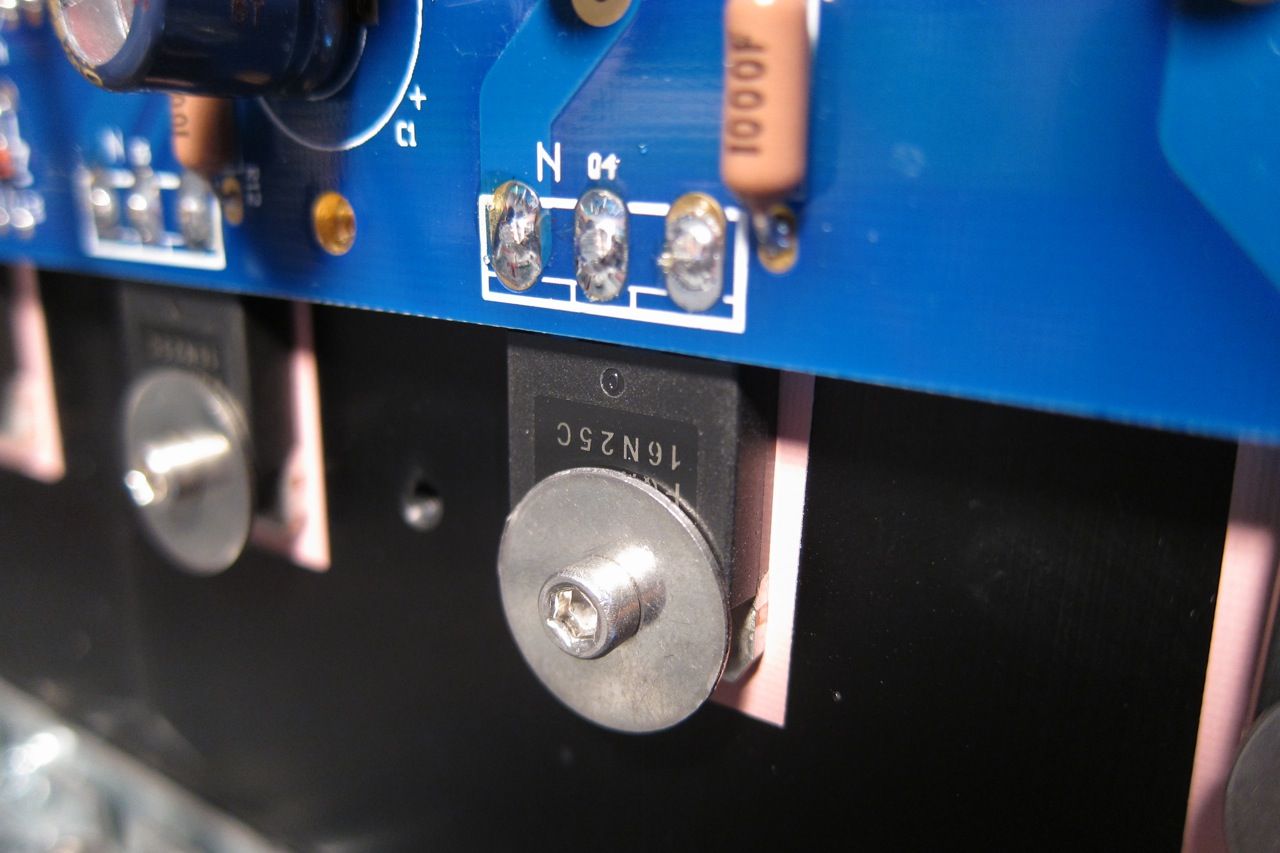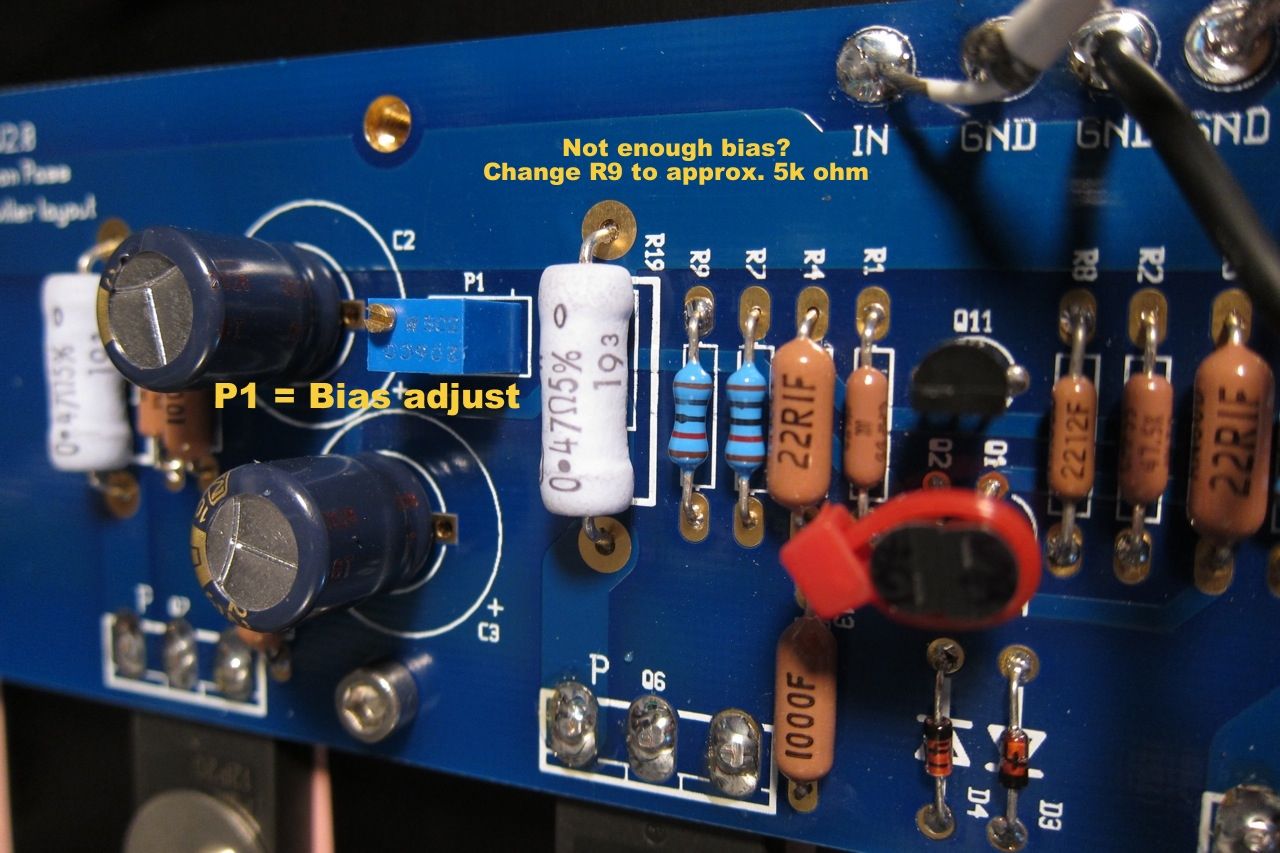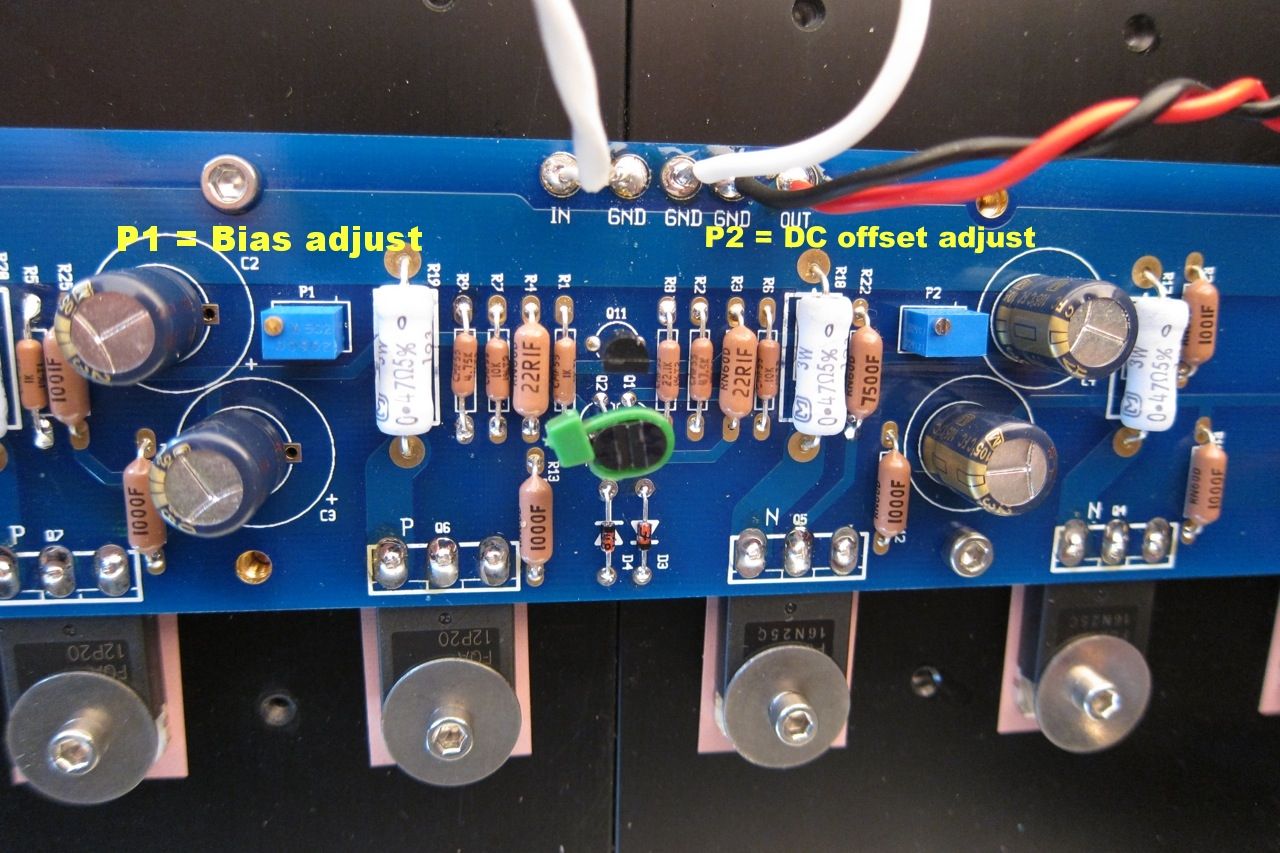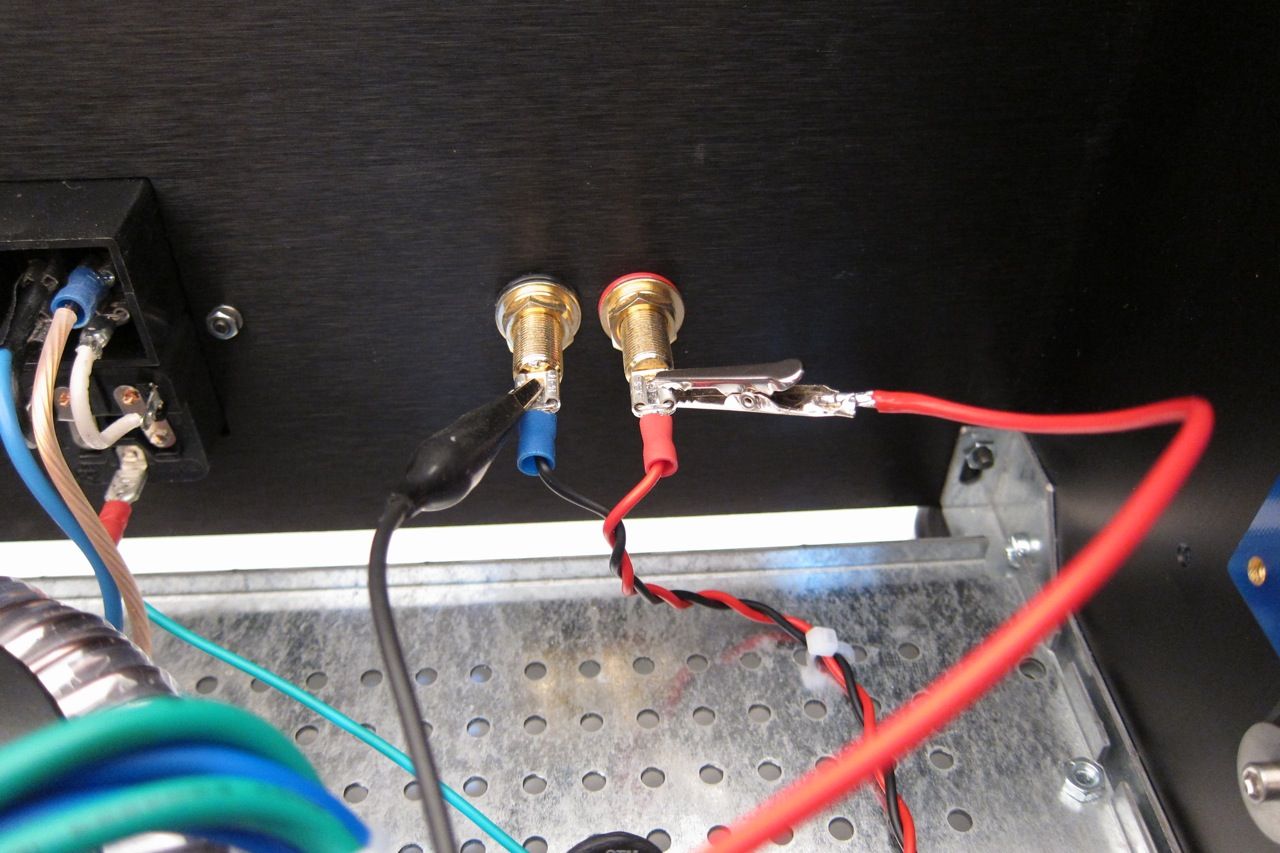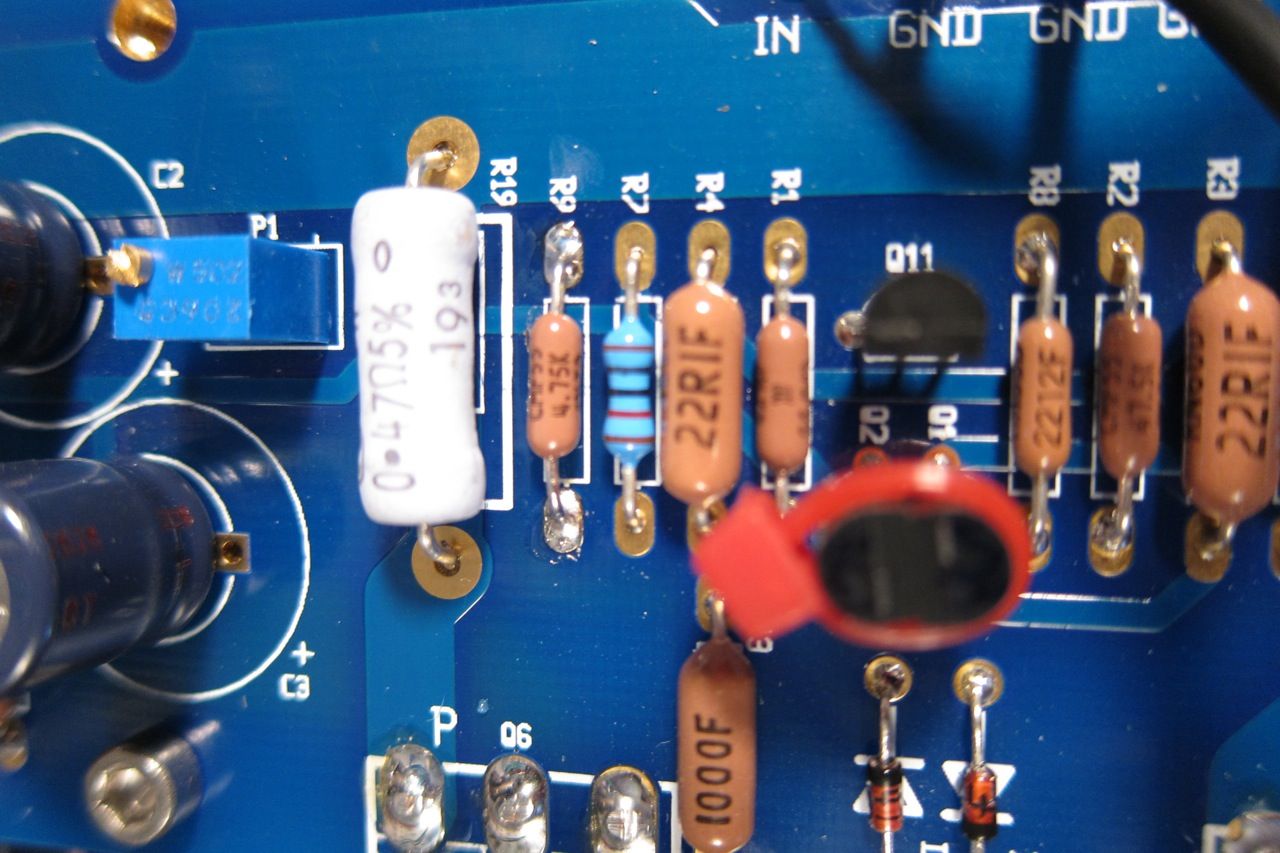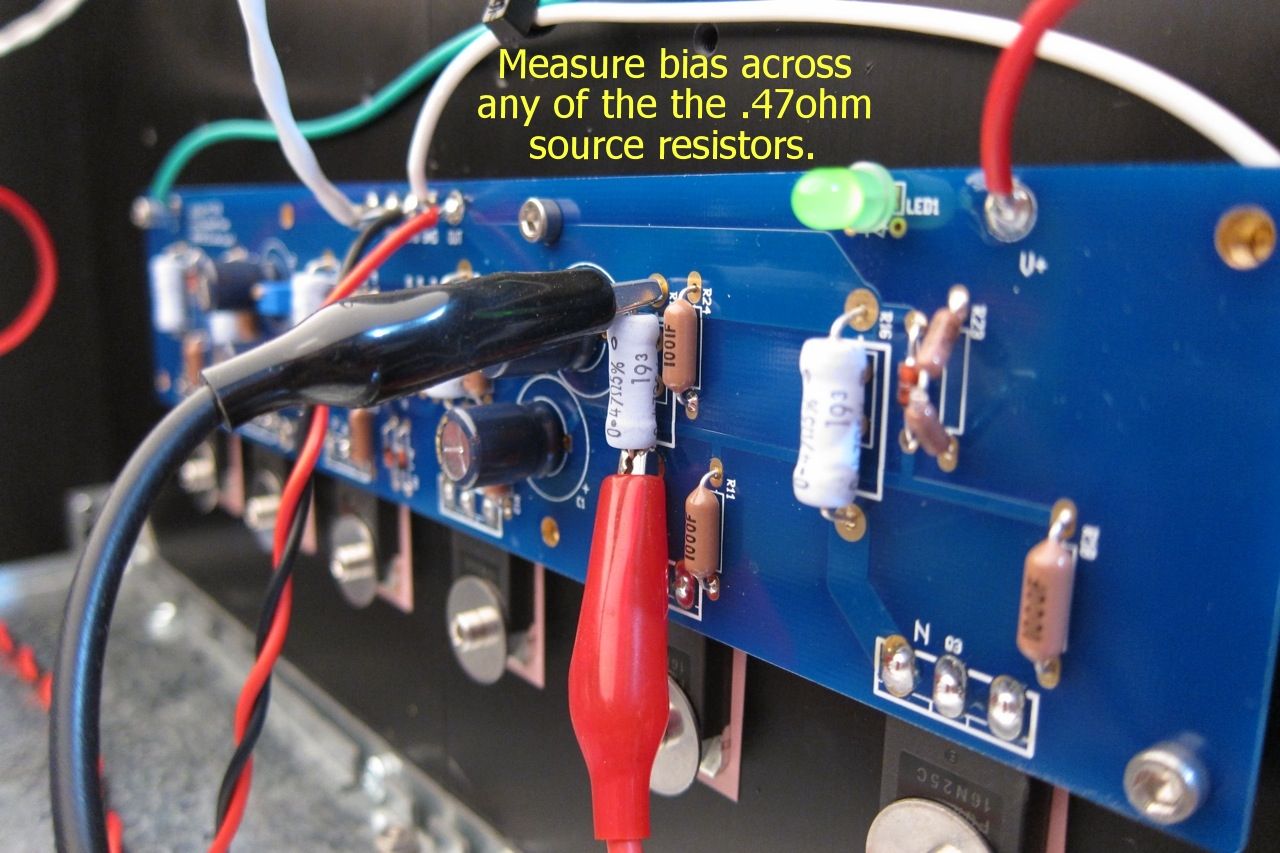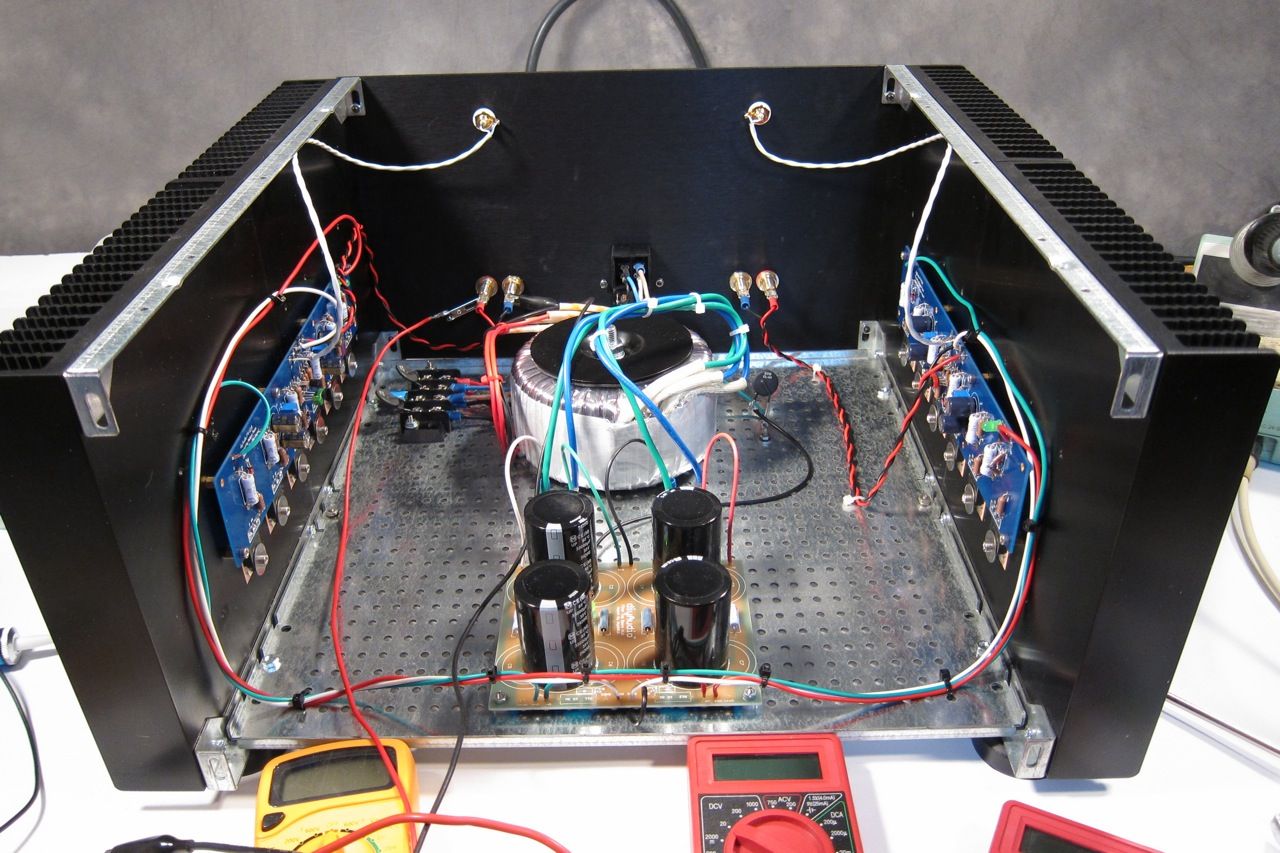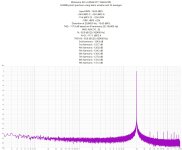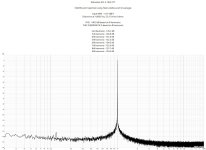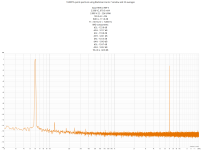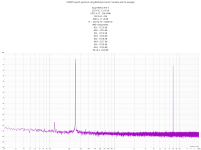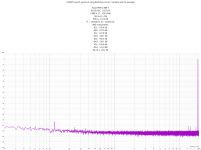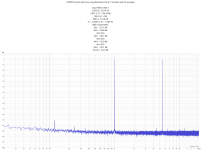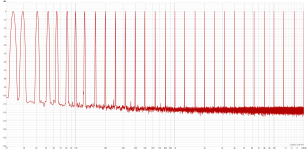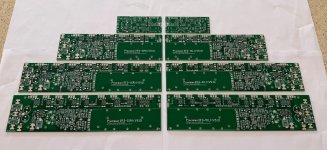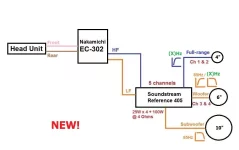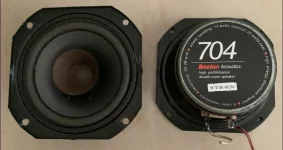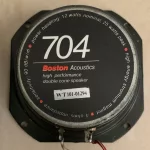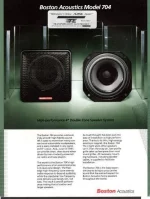Building the Pass/Firstwatt F4
This is a
fantastically good sounding amp - read more about it here before staring;
https://www.firstwatt.com/wp-content/uploads/2023/08/prod_f4_man.pdf
The thread at DIY audio -
http://www.diyaudio.com/forums/pass-labs/97540-f4-power-amplifier.html
And this the the corrected schematic (The schematic in the Firstwatt article has a typo, also this one agrees with the PCB)
Here you will find a build guide for the Pass / Firstwatt F4 power amplifier using PCBs and chassis from the DIYaudio store.
The 5U 'BIG Amp Chassis' is shown, because that's the one I have. It will fit comfortably in a 4U 'Jack of all chassis' and have enough heatsink as well.
~~~~~
There are plenty of places that you could start, but for the sake of illustration let's begin with the heatsink assemblies -
This is the heatsink(s) from the 5U 'BIG Amp Chassis' It has a mirror-imaged set of pre-drilled heatsinks and brackets to hole them together and make a mounting point for the rest of the enclosure. The 4U is similar, but the heatsink is a single piece.
This build will also utilize the 'DIY friendly' baseplate, here shown with the feet and hardware, and also the heatsink's brackets.
There is a hardware package available for the pre-drilled back and heatsinks, including input and output jacks, IEC module, and hardware for the PCB and heatsinks.
The contents of the hardware bag.
Using the brass PCB standoffs, install them into the PCB mount holes as shown, to get the following pattern;
Now there is a place to mount the amplifier PCB
Speaking of PCB, it's a very nice layout, plenty of room, and the ability to use many sizes of resistors and caps. This is the front.
Here is the back.
Stuffing the PCB should be done in the usual order, from smallest device to biggest - so that would be diodes and resistors first.
Of note, I got the bigger (Dale/Vishay RN60) resistors to see how they would fit on the PCB. They are the size of the PRP resistors that are quite popular amongst the fancy parts crowd. They are great everywhere except the row flanking the small transistors right in the middle. They don't fit there side by side. You could mount them soldier style, or just mix in a few smaller resistors like I did. Or just get RN55's. They are the smaller size.
Pots and transistors next. (yes, I didn't stuff the input pair when the photo was taken…)
Ah, there they are.
The ziptie is just to help their thermal tracking.
And finally the capacitors.
There is a top and bottom to the Universal Mounting Spec holes, the board mounts as shown
I find it helpful to bend the leads of the transistors first, and mount them (a little bit loose) to the heatsink.
Like this
And then mount the PCB. You can snug all the screws down and then solder and trim.
Ok, now lets move on to the Power Supply.
Here is a photo of the PSU board, I am going to use integrated bridge rectifier blocks, so you need to remove the part of the PCB that mounts the diodes. The new PCB, not quite yet available at the time of this writing, will have a similar feature with the diodes, as well as room for more/bigger capacitors.
As always, stuff the small components first - the light blue resistors are the filter resistors, the darker ones with the teflon are the bleeder resistors, and the small ones are for the LEDs.
This PSU board is the exact same DIYaudio PSU board, just without the top blue soldermask.
This shows the INPUT edge (from the diode bridges)
The capacitors are Panasonic T-UP 33,000uf 35V
Connecting the bridges to the PCB
This is the OUTPUT edge of the PSU - the colors are
Red V+
White GND
Green V-
The black connects the PSU GND to the CL-60 to the chassis.
The wiring from the PSU to the amp PCB is clearly shown.
Here you can see the bridges with the wires attached from the transformer secondary. Remember that the green attached to a bridge must have continuity with the blue attached to the same bridge. (As it's the 2 ends of the same piece of wire)
As long as were are tailing about the transformer, here is a photo of the terminal block shown wired for 120v. The Blur lead is the AC Live, and the clear the AC neutral. The reds and blacks are the transformer primaries.
Transformer is an Antek 400VA 18v+18v, part number AN-4218.
The last bit of the PSU wiring is the chassis connection, the black comes from the PSU GND, and the green is the AC safety earth.
The AC to primary wiring confuses everybody, so;
Let's look at the PSU schematic just to make sure everything is OK... Remember that I am wiring it for 120v operation, so the transformer primaries are in parallel. People wiring for 240 with a transformer like this, please ignore.
Notes in red are mine.
Look at the connections of the transformer primary, through the thermistors and line cap, to the mains.
Hot AC is connected to the "120" (which in my case is the red leads on the primaries) One red primary is connected to AC hot through a thermistor.
Neutral AC is connected to the black "0" leads, one of which is connected to the AC through a thermistor.
AC Hot and Neutral have a cap across the leads.
So, yes, the AC will be connected to the center 2 posts, which is across the cap.
(This photo lifted from my F5 thread, but it's the same PSU…)
Left to right we have post 1, 2, 3, 4
POST 1 - Transformer primary 'B 0' which will be connected to AC Neutral at post 2, through the thermistor between post 1 and 2.
POST 2 - AC Neutral in (not shown in photo), connected to Transformer primary 'A 0" , a thermistor to post 1, and a line cap to post 3
POST 3 - AC Hot in, connected to transformer primary "B 120", thermistor to post 4, and line cap to post 2
POST 4 - Transformer primary "A 120", connected to AC Hot through the thermistor to post 3
If you look at the red and black wires in the photo you will see that the Mains AC must to pass through a thermistor to connect to each of the 2 primaries. And that is the point of them, to keep inrush under control during powerup.
Ok!
Now we need to put everything together -
But first a bit more mechanical assembly.
This is the pre-cut back plate and the thick front plate.
Gather and mount the IEC plug.
The speaker posts.
And the RCA jacks.
Note that the shoulder washer goes on the inside, so the metal of the chassis doesn't touch the metal of the jack. There is a similar washer on the speaker posts.
The inside of the back panel.
And the outside. Looks good, yes?
The IEC module is wired as shown. This will switch both the Live and Neutral. The blue (live) and clear (neutral) go the the wiring block with the thermistors, cap and transformer primaries.
The amp PCB completely wired.
A bit closer.
The top connections labeled.
This happens to be the other channel, but the connections are all the same.
Remember that V- / GND / V+ is always left to right as you are looking at the format of the PCB
I'm not entirely sure what I was trying to show here, other than the screw and washer. It looks cool. I will keep the photo in the guide.
A few notes on bias -
P1 controls the bias, measured across any of the 3W source resistors. Adjust for 0.13v when it's cold, and watch that it doesn't get higher than 0.2v once it's up to temperature in about an hour. Adjust for 0.2v when hot.
P2 is used to adjust the DC offset on the output to zero.
Attach a DC voltmeter across the speaker outputs to measure offset.
If you find that the P1 doesn't have enough range, I.E., you can't turn it up enough, replace R9 with a smaller resistor, I used 4.75K and it works well.
Connect a voltmeter across any of the source resistors. The outboard ones are easier to clip across.
Adjust for about 0.13v cold, and once the amp is up to operating temperature, trim for 0.20v - It takes a long time to warm up, take your time.
Adjust P2 for zero offset, then re-trim P1
Here is a photo of it all connected and working -
I'm driving the F4 with an O2 Headphone amp sourced from an iPod; Driving 85.5db speakers. Although it is a small room, it gets louder than I want to listen. It still can't drive it to clipping, but it does get really, really loud.
One thing worth mentioning, and it speaks very highly to the quality of the amp, is that it is completely non-fatiguing, and more interestingly, very easy to listen to turned up too loud… I don't realize how loud it actually is sometimes. Complete transparency is a word used a lot when describing this amp - but I have to agree. It's fantastic!
Please comment away if you desire.
Also please feel free to ask any F4 questions here, and if you would like to post photos of your F4 completions, old or new, please do!
